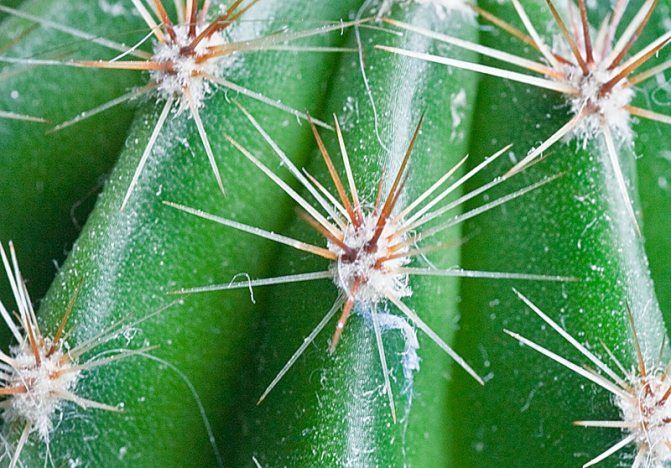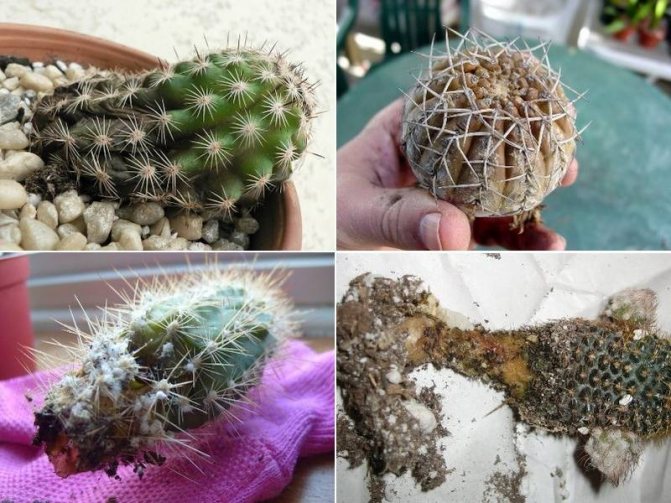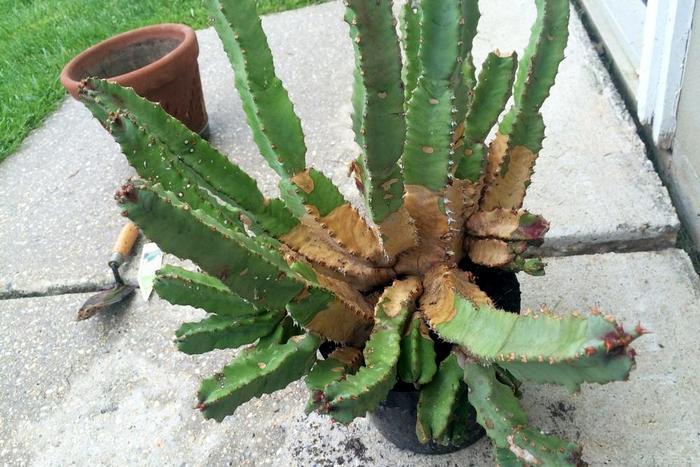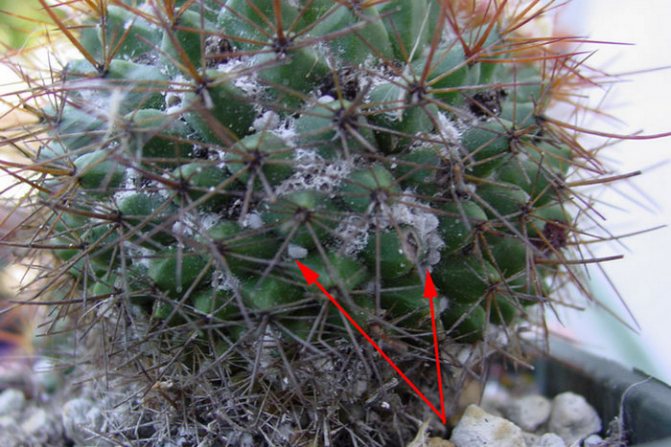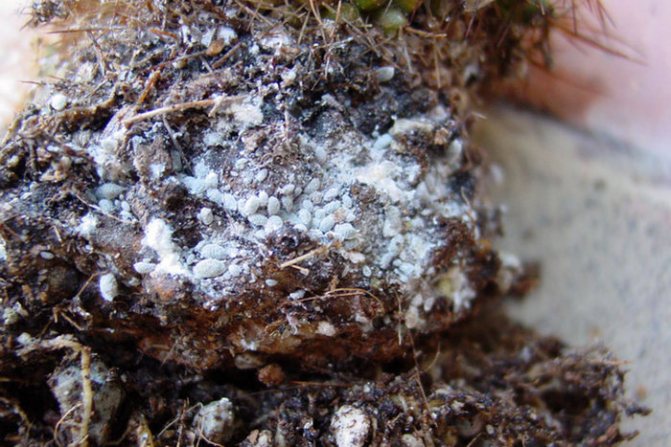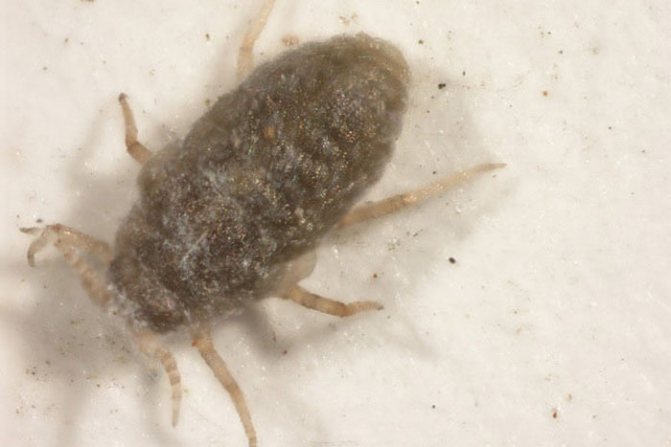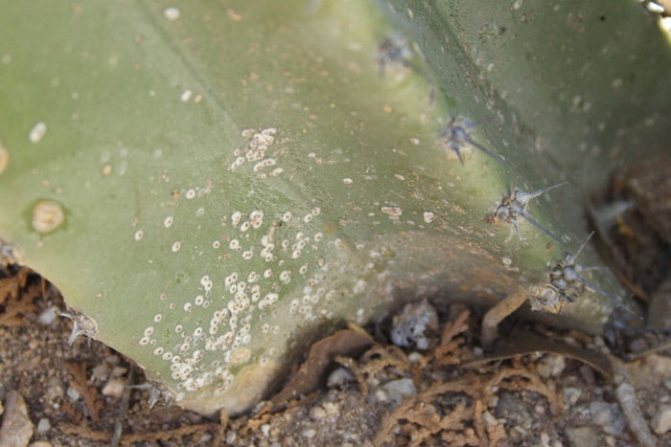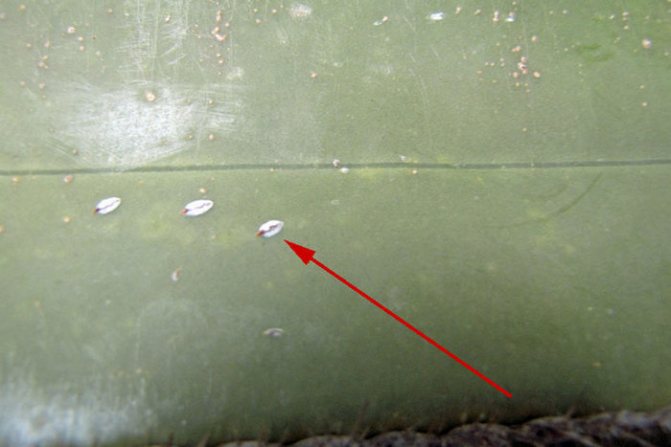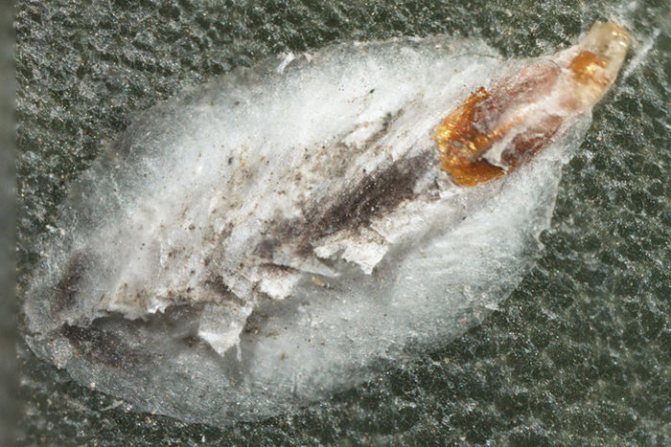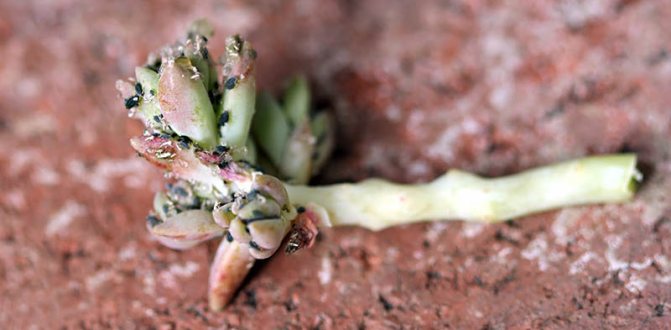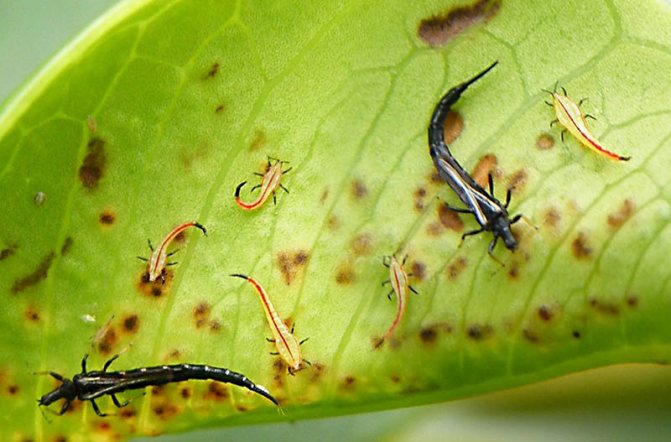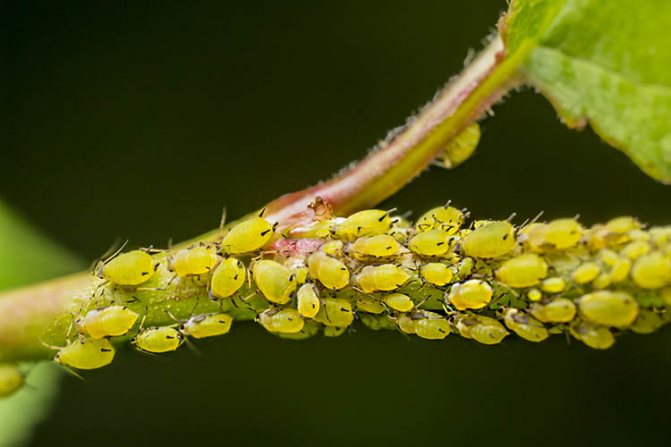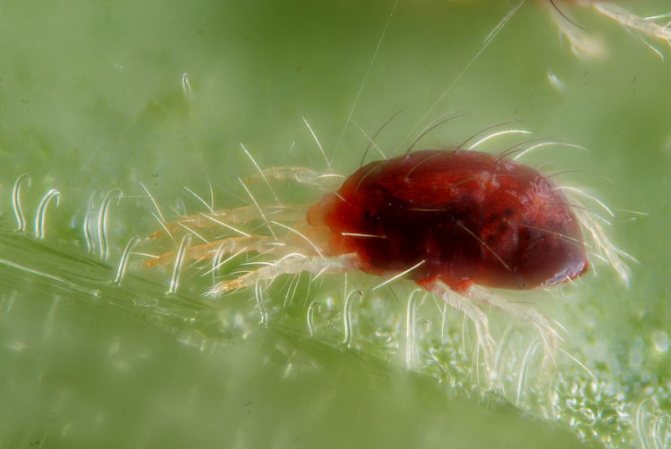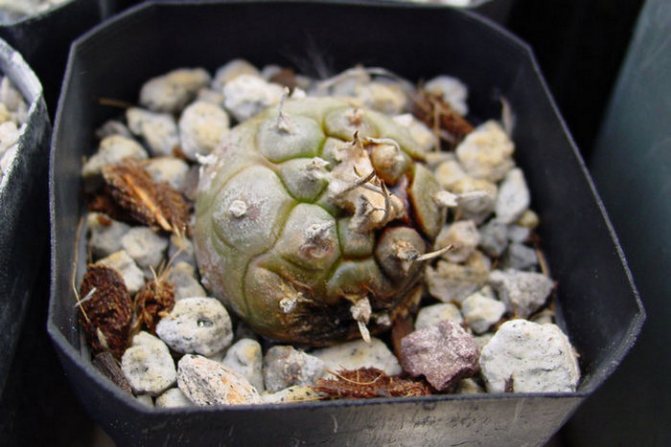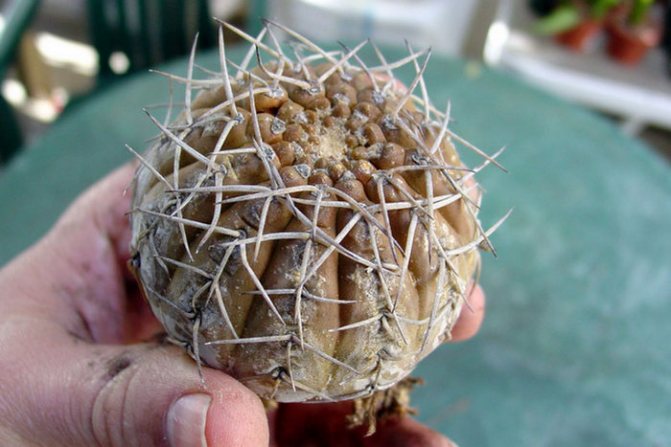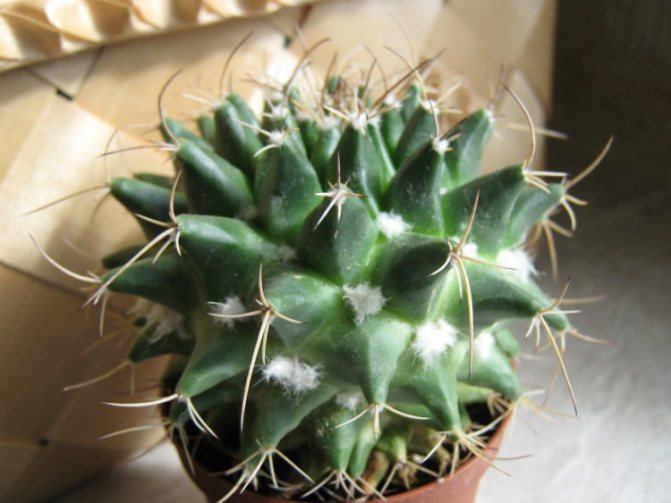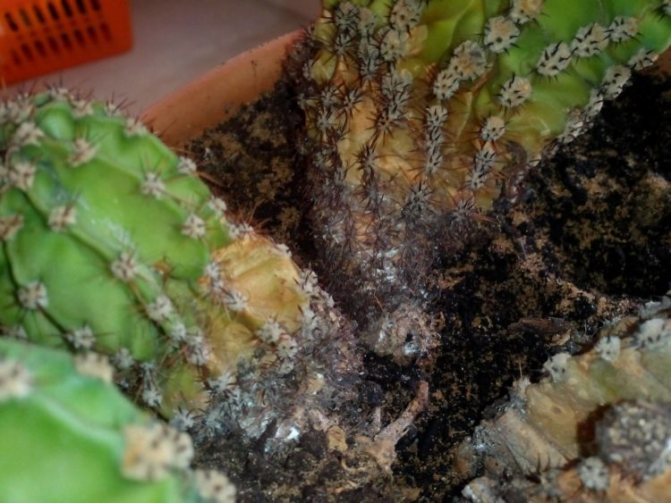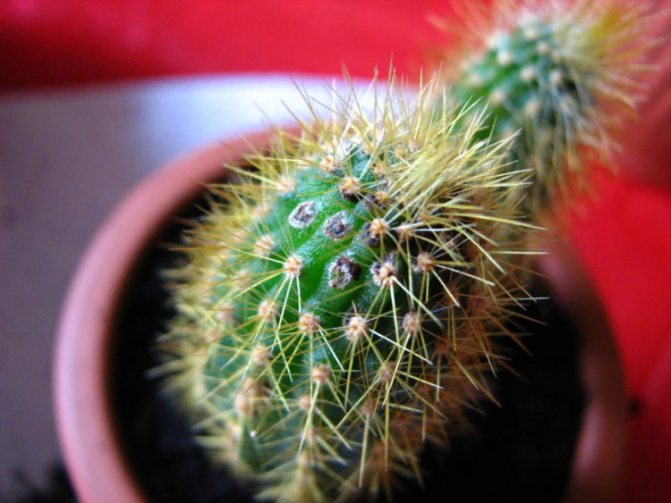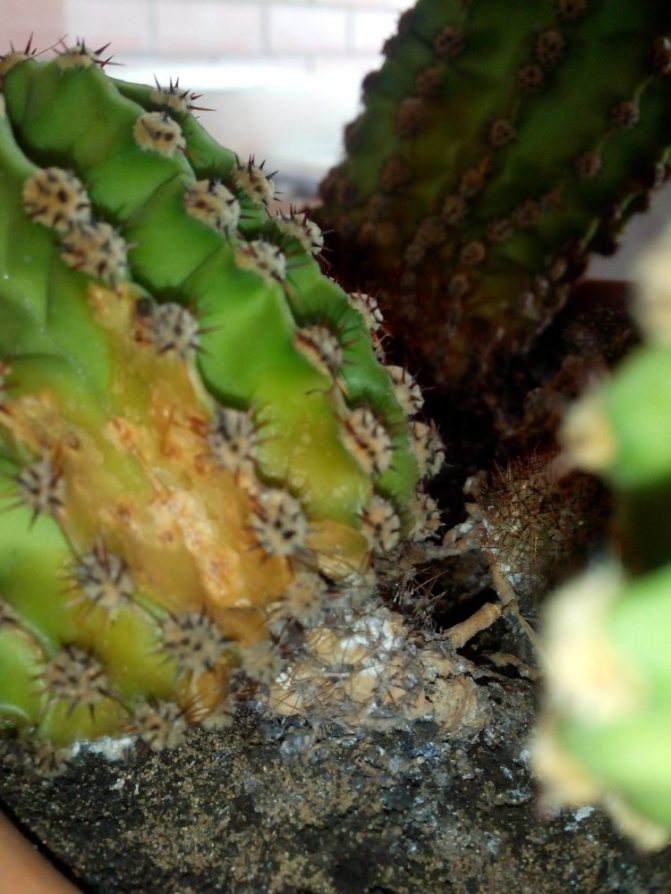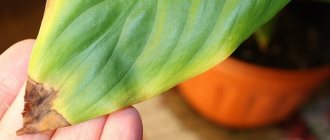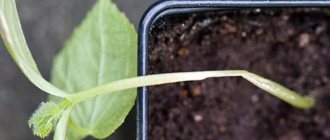
In most cases, cactus diseases are dispelled only if the agrotechnology recommended for a particular type of this crop is violated. Improper watering, illiterately selected soil, violation of maintenance rules, installation on a windowsill, where there are drafts and the constant influence of cold air - all lead to the development of bacterial, viral and fungal infections. Succulent disease often manifests itself as a variety of root and stem rot. It is very difficult to deal with them. It is much easier to carry out timely prevention and eliminate the risk of plant infection. But if the trouble has already happened, it is important to understand how the treatment is carried out at home and what methods of cactus therapy can be used without fear. A description of the main problems of growing succulents can be found on this page.
Numerous photos of cactus diseases will help to accurately determine the cause of troubles and identify a way to deal with them:
Signs and causes of cactus disease
Determining that a cactus is sick can be quite difficult, given that many diseases at the beginning can be completely asymptomatic and only when the type of plant begins to deteriorate, questions begin to arise, what kind of spots are these, why the cactus is rotting, which, it seems, before that he arranged both watering and temperature, how to save a decaying cactus and related ones. Let's dwell on these topics, consider the most common diseases of prickly pets, their causes, symptoms and methods of treatment.
Diseases can be caused by fungi, viruses and bacteria, but more often by the plant owners themselves. Improper care has a very sad effect on the condition of cacti. Most often, cacti get sick after watering with cold water, after falling into a draft (in cold or windy weather, a window or window was opened), when they are sharply exposed to direct sunlight. By the way, this is a very common mistake. Having decided that cacti growing in deserts can be immediately placed on the eastern or southern windowsill, without gradually preparing them for the sun, you can lose the plant before you have had time to make fun of them.
If a wound or crack appears on the cactus, they must be healed immediately with the help of crushed coal. And the last - in winter, cacti are not watered, this can also cause health problems.
Fusarium in cacti


Fusarium is a fungal disease that manifests itself on cacti as a pink or purple bloom on the stems. The disease starts from the roots and visually shows itself too late in order to fight it. Sick plants are destroyed.
There are also other cactus pests and diseases. We will write more about them if you tell us what interests you. But prevention in the case of cacti is an extremely important aspect when caring for them.
Cactus rot: infectious and fungal
Let us dwell in more detail on putrefactive diseases, their causative agents, symptoms and solutions to problems.
Late blight of cactus
Late blight is an extremely dangerous disease that can affect an entire collection of cacti.Its spores spread very quickly and can be carried along with seeds, infected plants that have joined the collection, and even with vegetables and fruits.
This ailment is also called red leg or rotten leg. A very accurate name, given that with late blight, the base of the plant decays.
If the disease has affected the seedlings, then they need to be treated with fungicides every 3 hours, it is recommended to inoculate the affected parts. If an adult plant has suffered, then it is recommended to cut out the affected areas, and treat the cut sites with fungicides.
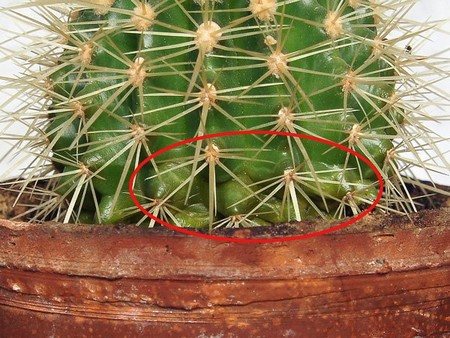

Helminthosporiosis
Helminthosporium infection is most often introduced together with seeds from the natural habitats of cacti, therefore, for its prevention, it is recommended to carry out a seed dressing procedure before sowing.
The disease is very dangerous and can lead to the death of a cactus in a matter of days, the plant dries up, bends and dies. Treatment consists in immediate removal of the affected areas and plant transplantation.
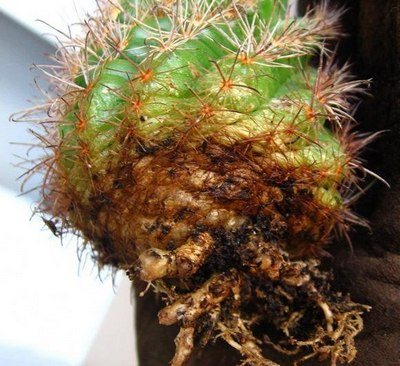

Rhizoctonia
Wet rot rhizoctonia often affects cactus seedlings and cuttings. The disease progresses rapidly, rises from the base to the top of the plant and causes its death. As in previous cases, you need to immediately remove the affected areas, and the rescued plant should be transplanted into a fresh, steam-disinfected cactus substrate.
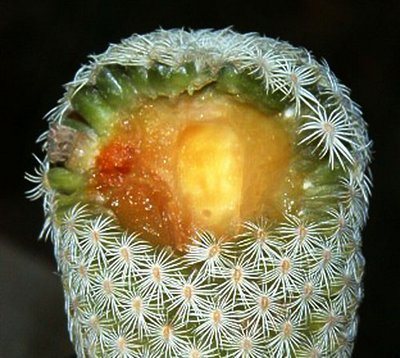

Fusarium infects the plant from the root and very quickly rises to the top, thereby destroying the cactus. A characteristic feature of fusarium is the color of the vessels in a rich red color, this is noticeable when you cut off a baby cactus.
Most often, such an ailment gets through the wounds and cracks of the cactus, therefore, as a preventive measure, it is recommended to observe the watering regime and protect the cactus from any mechanical damage. An already affected plant must be removed, the earth must be steamed.
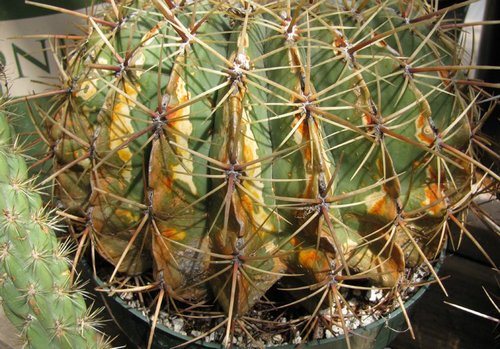

Black rot
Mamilaria, which manifests itself with the appearance of black putrefactive spots in the areoles and the fall of thorns from them, arises as a result of planting a plant in infected soil, with waterlogging of the soil and a lack of light, or with mechanical damage to the plant.
For its prevention, the substrate should be disinfected with steam before planting the plants, protect them from cracks and scratches, and adhere to the light regime. Overflowing the plant also puts it at risk.
To save the affected plant, you need to remove the diseased areas, treat the wounds with fungicides and transplant it into a new clean soil.
Phomosis is also called dry rot. The danger of this disease is that it is almost impossible to detect until the moment when the cactus is hopelessly affected. Outwardly, it is impossible to notice the problem, but from the inside the plant dries up and, as a result, when completely exhausted, it bends and dries up.
There is no way to treat phomaosis, therefore it is recommended periodically, as a preventive measure, to spray cacti with a fungicidal solution.
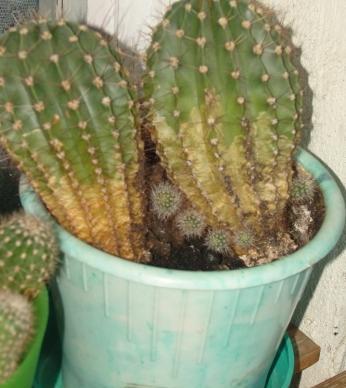

Physiological diseases
Disorders in care are the cause of this kind of disease. The result is: bud fall, root decay or burns.
Suberization
Description:
Corking does not interfere with plants, it can be a symptom of errors in cultivation, the result of the natural life cycle of the plant, in prickly pear, thus, aging of the epidermis manifests itself.
Photo:
Treatment:
If corking is caused by errors in cultivation, you need to move the pot to a lighter spot and consider if the disease is the result of over-fertilization. You can rejuvenate the plant by cutting off the top and rooting it, then the corking will "disappear".
Kidney collapse
Description:
Falling buds in cacti are caused by a lack of moisture in the room, low temperatures and a lack of fertilizer.
Treatment:
The most common reason is to rearrange the pot, the plant should stand in one place during flowering, facing the sun.
Burns
Description:
Illness is caused by: Excessive sun exposure, poor indoor or outdoor airflow, and excessive heat. Burns most often appear on cacti in the summer on a windowsill in an unventilated room. A distinctive feature of burns are white spots that do not disappear even after a few years. The disease affects cacti at the moment when plants are transferred from a dark place to a bright one.
Photo:
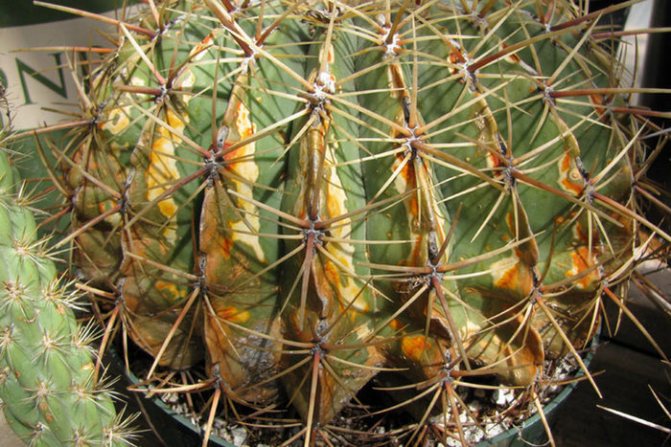

Treatment: To cure burns on cacti, you should protect from excess sun, after the wintering period, gradually accustom you to a brighter place.
Chlorosis
Description:
Chlorosis causes the disappearance of chlorophyll in plant tissues. It manifests itself in a yellow or yellow-green color of shoots. The disease causes a lack of iron and magnesium in the soil.
Photo:
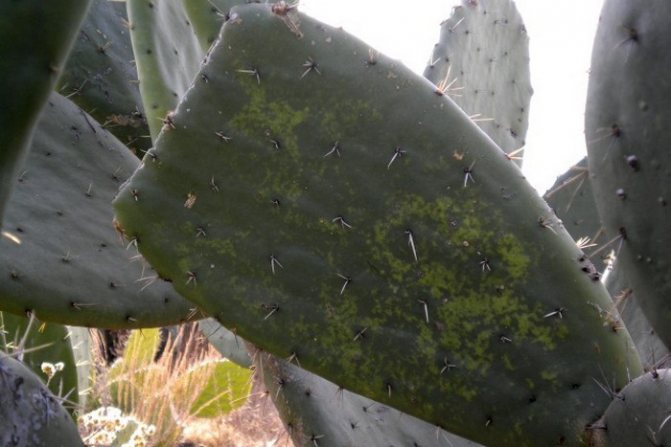

Treatment:
To prevent the development of the disease, even at the first symptoms, it is worth fertilizing the cacti with fertilizers rich in the above-described components.
No gain
Description:
The plant stops growing as a result of improper care. For example, poor fertilization, insufficient watering. These omissions cause no gain.
Treatment:
To cure the plant, it is worth transplanting it into new soil, fertilizing it accordingly and watering abundantly.
Spots - diseases of cacti caused by fungi
The most common of the "spotted" ailments of cacti is rust. It is easy to detect by the rusty color of spots and stains on the trunk of the plant. Cactus rusting can be caused by the ingress of water directly onto it, burns from direct sunlight and a sharp drop in temperature. The disease spreads very quickly, so it is necessary to treat it immediately, the best of all with Topaz.
Anthracnose are light brown spots that, if untreated, form a plaque on the trunk of a cactus. The disease spreads quickly and affects the whole plant, so the affected areas are cut out, and the cactus is sprayed with a fungicidal solution.
When damaged by brown rot, the stem of the cactus turns black, and the plant itself changes color to brown-brown. Bacteria infect a cactus from the inside and, unfortunately, it is impossible to save a diseased plant
The yellowing of the cactus causes nutrient deficiencies or harmful bacteria in the soil. If the treatment with mineral components does not give results, then the plant is sick with bacterial "jaundice" and this, alas, is not cured.


Pests
Cacti are most often attacked by spider mites and mealybugs.
Mealybugs
Description:
Pests attack the plant, sucking out the juice, the development of the cactus is suppressed. The damaged cactus turns yellow. Worms attack in winter, in rooms with a lack of fresh air, where the temperature is high. Worms attack primarily young specimens.
Photo:
Treatment:
By applying natural pest control methods, you can get rid of by humidifying the air around you by moving the pot to a cooler place.
Description:
Aphids are green insects that are several millimeters long. They hunt deciduous cacti.
Photo:
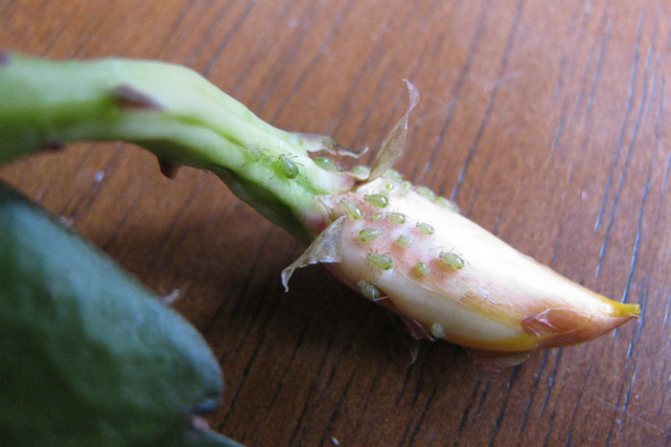

Treatment:
Naturally, you can fight aphids by spraying the plant with a soap solution or nettle decoction.
Spider mites
Description:
The parasites reach a length of about a millimeter, representing red spiders. They enjoy the young tops of the shoots.
Dry and sunny summers contribute to ticks, attack the plant by drinking the juice. Diseased plants end up with a rusty color.
Photo:
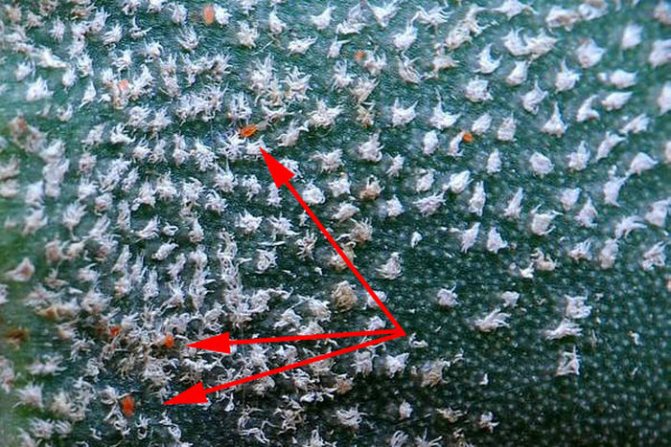

Treatment:
Spider mites will leave the plant if fresh, moist air is provided and sprayed with soap and water.
Shields
Description:
Shields hide under brown shields. Shields protect females and eggs, and pests are difficult to eradicate.
Photo:
Treatment:
The easiest treatment is to use chemicals or remove pests from the plant. Removal consists in the elimination of pests, dipped in soap with a stick for the ears. Doing this every day will significantly reduce the number of parasites. Cover the soil in the pot before removing the pests, the fallen scale insects will return to the plant. Parasites are especially fond of "columnar" cacti. Infected plants turn yellow.
Cactus pests
And finally, how to deal with pest diseases in cacti. The mealbug and spider mite are the ones that most often harm indoor cacti. Their appearance is associated with non-compliance with the rules for growing cacti.


The presence of a worm is signaled by a white bloom on the plant, which is manually selected with a cotton swab dipped in alcohol. If it is present, there is a risk of root worm damage to the root, so the plant should be removed from the pot and the roots should be examined. The affected areas are removed, the root is washed with soapy water, dried, and after two weeks the cactus can be planted in new, fresh, disinfected soil.
Nematodes infect the roots and are very dangerous, the affected roots of the cactus must be cut off, the plant must be quarantined and planted in new land. If the defeat is significant, you should use Nemaphos.
Read also: English rose Graham Thomas: photo, description, conditions of detention
The spider mite loves dry air, so you need to take care of maintaining a moderately humid microclimate, spray the air near the plant, especially in winter. The infected plant will be treated with insecticides.
Pests
At home, insects rarely damage a cactus, especially with good immunity. Pests can be divided into those affecting the roots and the aerial part. The latter are more common, more noticeable on fleshy stems. The vital activity of insects can be determined by a yellowed fleshy stem, a whitish bloom, various specks and depressions, a thin cobweb.
The most common pests of cacti:
- aphid;
- spider mite;
- mealybug;
- shield;
- root felt.
This small insect lives in colonies, multiplies rapidly. Pests of cacti feed on sap from young shoots and buds, which leads to wilting and death. You can destroy them by washing off the stem with soapy water or a solution of potassium permanganate. It is undesirable to use only this method, since it is possible that the larvae or adults will remain. From biological methods, a solution of ammonia, tobacco is used. In severe cases, spraying with special insecticides approved for home use should be carried out.


Spider mites
They get on the cactus from other plants, prefers fleshy varieties - echinopsis, chamecereus, rebuts. They are an insect 0.4 mm in size, slowly moving, but rapidly multiplying. A favorable environment for the life of the pest is high temperature and dry air. It gnaws at the skin and sucks out the sap of the plant. A sign of damage is brown spots on the stem, a light cobweb. The damage caused by the spider mite is not repaired.
To combat, regular spraying is carried out from a spray bottle. If possible, it is advisable to wipe the stem with soapy water, alcohol, garlic tincture. Additionally, you can process karbofos, nearon, cyclamen, various compositions according to folk recipes. Spraying with a solution of ether sulfonate is considered the most effective.
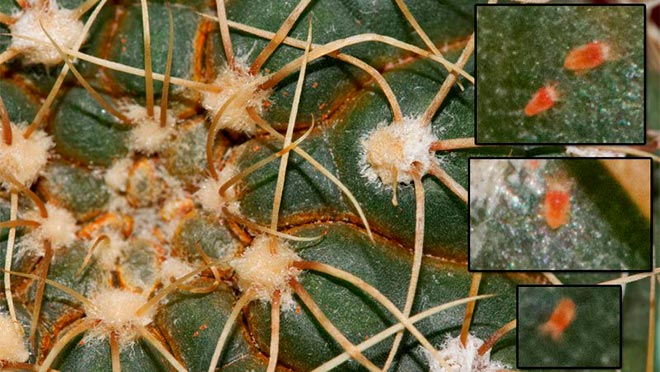

Mealybug
Another name is shaggy aphid. The pest is white, 0.5-0.7 cm long, settles in the folds of the stem or around the thorns, where water does not get. It spreads quickly over the surface of the cactus.A sign of damage is a white, cotton-like discharge that serves for oviposition. The most difficult insect to spot is on species that are covered with fluff or hairs.
It is recommended to remove the mealybug from a weakly affected plant with cotton swabs dipped in an alcohol solution. It is permissible to wash off a large colony with a stream of water, having previously covered the soil substrate with a package. Additionally, it is advisable to spray with a chemical that is approved for use at home.
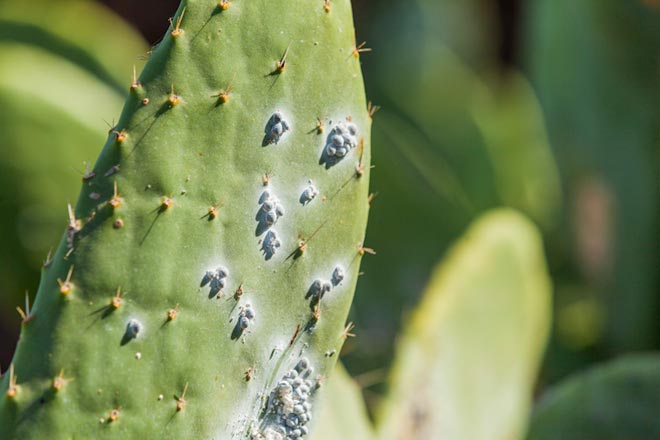

Shields
The insect can be seen by its small flat scales. The color of the pest ranges from red to dark brown. The scale insects feed on the sap of the cactus, leading the damaged specimen to exhaustion and death. They move slowly, almost imperceptibly. A large colony causes sticky secretions to appear on the stem. It is recommended to clean the settlements with a cotton swab dipped in an alcohol solution. In the case of long and densely growing thorns, treat with Aktara or Confidor solution.
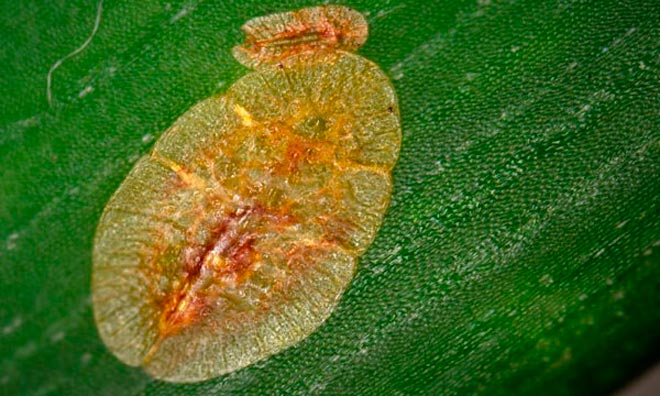

Root felt felt
The pest attacks during wintering when the soil is dry. It feeds on the root system, leaves a white cobweb, slightly paler than the roots. You can prevent the death of a cactus with a transplant. The roots should be washed with a solution of dishwashing liquid (1 tsp for 1 liter of water). Transfer the treated plant to a fresh substrate. The use of chemicals is acceptable.
Rot is a common disease of cactus
Most often, the plant is affected by rot. This is due to improper care of the plant. It is possible that the flower was left in a cold or overly humid room, and was also poured over. Rot can develop against the background of bacteria and fungal infection.
Among all, one can distinguish:
- Cactus phytophthora. This "mushroom" affects the entire plant, although the root collar suffers most of all. It is impossible not to notice the problem, because the part of the cactus that was affected turns into a soft "porridge".
- Helminthosporiosis. This disease is also called the crop disease. Small trunks of young animals quickly bend, and then dry up.
- Rhizoctonia or wet rot. If dark spots are noticed on the plant, blackening of the stem, it means that the flower was struck by this particular disease.
Important! It is possible to prevent the development of both the first and second diseases, if the soil is well disinfected before sowing the seeds.
The same should be done with seeds. It is also necessary to ensure that there is no high humidity in the greenhouse.


It should be said that sometimes cacti are affected by Fusarium. This disease manifests itself suddenly: the color of the plant stem changes, it becomes purple, brown or brown. In addition, the cactus suddenly begins to slope downward.
Having noticed such symptoms, it will not be superfluous to get the cactus out of the pot. If it was noticed that the roots are breaking off or they have almost rotted, then there is no doubt that the plant has become infected with Fusarium.
Fungal diseases
After viral diseases, fungal diseases are most dangerous for cacti. They are difficult to fight with, but they can be cured. Immediately separate diseased specimens from healthy specimens.
Gray mold
Description:
The disease affects germinating seeds. Some seeds are infected. This is manifested by brown spots on the seedlings. The development of the disease leads to the death of seedlings. The disease also affects fully formed cacti.
Treatment:
You can cure gray mold by treating the seeds before sowing with a special fungicide.
Seedling gangrene
Description:
The cause of the disease is a fungal attack. Plants can contract the disease through infected seeds or soil. Seedling gangrene is manifested by blackening and death of the tissues of the base of the stem and roots.
Treatment:
Diseases are promoted by dense planting of seedlings, eliminated by disinfection of soil and seeds.
Cactus rot
Description:
The disease strikes in the spring. Rot is facilitated by the lack of airing the room and watering the plants when it is cold. Affects the base of the main shoot and the root collar.
Photo:
Treatment:
In the spring, spray cacti with fungicidal preparations.
The disease also threatens the roots. If you water a cactus abundantly, and the roots were damaged during wintering, they will begin to rot.
How to treat a decayed cactus
In the case when rot has struck the roots, then you can act in different ways.
The first method is used when the root system has not had time to rot completely. In this case, all affected and rotten roots are cut off, the rest are washed in a manganese solution, and then sprinkled with sulfur or coal powder. Leaving the cactus in this state for a couple of hours, you will need to take a new pot and a new substrate, fill a flowerpot with it, and then plant a cactus in it.
Important! Add as much sand as possible to the soil.
After transplanting, the plant is not watered. The manipulation is performed not earlier than after 3-4 weeks, and they do it extremely carefully. So that the problem does not recur, you should establish the correct watering scheme for the flower.
In the second case, it is not so much a transplantation as the rooting of the cutting is needed. This happens for the reason that the roots have rotted. In order to save the upper part of the stem, it is simply rooted as a shoot. In this case, special attention should be paid to pruning. It is very important to make it in such a way that only the healthy part remains.
If the stem or root collar decays, there is a chance to save the apex. To do this, you can graft it into a healthy cactus.
Often, when stem rot appears in the place where a wound has formed on the skin of the cactus. Realizing that the lesion is still small, it will need to be cut out to healthy tissue with a sharp knife. After that, the "wounded place" must be carefully covered with sulfur. In case of serious damage, this can also be done, but it must be said that in this case, on the one hand, a serious curvature will remain.
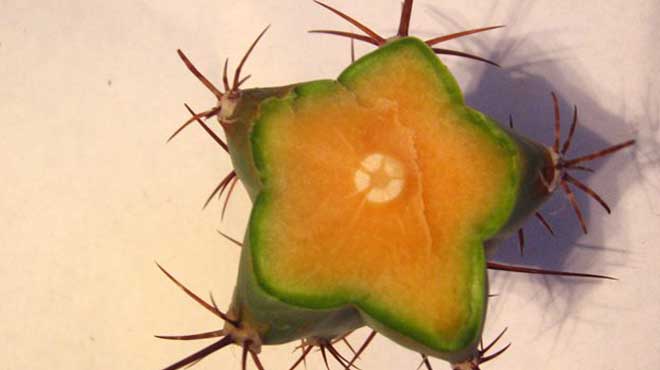

Experienced gardeners note that there are times when the top of the plant begins to rot. In this case, everything is simple: it needs to be cut to healthy tissues, and then sprinkled with activated charcoal or wood. If this good is not there, the usual green stuff will do.
Can a plant be reanimated if it is dry or rotten?
It will no longer be possible to save a completely dead cactus with the first signs of decomposition, but if the plant has at least a little healthy tissue, especially closer to the crown, resuscitation is usually successful. Revive the cactus as follows:
- You will need a sharp blade that needs to be disinfected. Holding the head of the cactus with one hand, make an even cut a couple of centimeters below the last green papillae. Inspect the cut carefully, if there are suspicious areas - cut them out to healthy tissue. Sharpen the cut like a blunt pencil, cutting the fabric with thorns at an angle of 45 degrees.
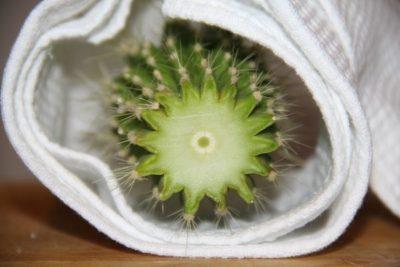

The cut must be dried within a week, during which time it will be drawn in. Next, you need to provoke root formation. To do this, put the cactus on the edge of the glass and pour water on the bottom so that there are several centimeters between the cut and the liquid level. After a week and a half, the roots will appear.- When the roots reach a centimeter in length, the cactus can be transplanted into a small container and then follow the usual care. The only exceptions are top dressing - fertilizers are contraindicated in the first year of the transplanted cactus.
Rules for rooting a cactus saved from rot
- Having cut off the top from a rotten cactus, it will need to be properly rooted so as not to ruin this part of the plant.
- After that, a well-disinfected soil should be prepared. You need to make sure that it is not wet.
- After drying, the cutting is crushed with crushed charcoal and placed on the soil mixture.
Important! Do not dig in the cactus.
If the top of the plant is low, then it does not even need to be fixed with anything, it will not go anywhere anyway. Otherwise, you can prop the flower with pebbles from all sides or stick a stick next to the cactus, and then tie it to the plant with a soft thread.
At the end of the procedure, the flower is not watered for two weeks. In the summer, spraying from a spray bottle is allowed. Care must be taken so that the air is not too dry, so that the plant does not dry out.
Some gardeners do not understand why they do not add cactus. This is done so that you can control when roots begin to appear. From that moment on, the flower is no longer raised, and the watering is slightly increased.
Care
Proper wintering is very important for a cactus.... From November to March, it must be kept in a bright, cool place at a temperature of 8-12 degrees above zero, without watering, dressing and drafts. It is necessary to withdraw from hibernation gradually - do not water abundantly at once.
As it grows, the cactus needs to be transplanted into a new, more spacious pot, making sure that the soil level is the same as in the old container.
In general, an unpretentious desert inhabitant, nevertheless, needs a timely response from its owner to any negative changes in appearance or well-being. Compliance with the recommendations for care will help to contemplate a healthy cactus in the interior for many years, because any ailment is always easier to prevent than to cure.
If you find an error, please select a piece of text and press Ctrl + Enter.
What other diseases can affect a cactus
Many diseases affect the cactus. Some have been mentioned earlier, others will be written below.
Black rot


This disease makes itself felt by the appearance of dark brown or black spots on the trunk. It may even appear that in some places these spots have a shiny tint. Taking into account the fact that the disease spreads rapidly through the flower, it is necessary to fight it in the initial stages. To do this, you should cut out all the "ulcers", treat the cuts well with sulfur, and then spray the flower with a homa, foundation or oxychoma.
Dry rot
Phomosis or dry rot is a disease in which the cactus begins to dry out and wither. At first, it may seem that the plant simply does not have enough water, but this is not so. Liquid will not help in this case. The roots will be alive, but the stem inside will be completely dry. Phomosis cannot be dealt with, but it can be prevented. To do this, from time to time it is necessary to treat the cactus with a systemic fungicide. The procedure is performed every few months. This will be enough.
Read also: Salpiglossis: growing from seeds, planting and care in the open field photo
Important! At the initial stage of the disease, you can try to treat it with fungicides, but no one will give guarantees that it will be possible to cure the plant for sure.
Mottling
Spots can appear as a result of improper flower care. We are talking about drafts (from which the flower should be kept away), high humidity or low air temperature in the room. All this leads to the multiplication of fungi and the appearance of viruses.
The mottling can be in the form of "rust". At the same time, characteristic orange streaks or rusty crusts are noticeable on the stem. A sunburn leads to such a disease (and not only in summer, but also in winter, when the cactus is on the windowsill of the sunny side) or the ingress of cold water on the stem.
You need to understand that rust that appears in one place can spread to another, so measures should be taken. If the gardener has no knowledge of how to save a cactus, then you can at least spray it with fungicides. In the event that this does not help, you will need to buy Topaz, which effectively fights rust. Some growers, having noticed the disease, try to clean off all the rust.This is not worth doing, because, firstly, it will not work, and secondly, terrible marks will remain on the cactus.
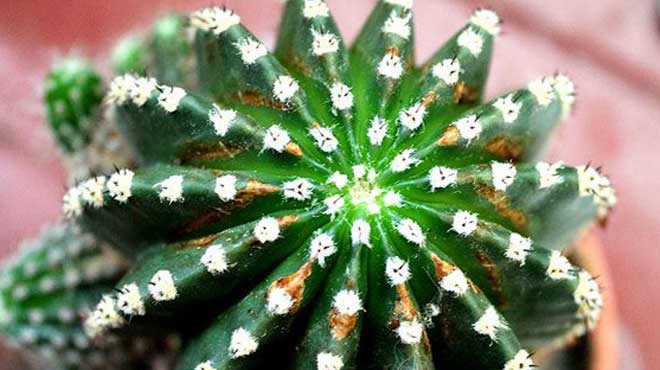

Sometimes you may notice that strange spots appear on the plant. However, putting the flower on the sunny side or in a warm room, it turns out that nothing happens to the spots: they do not spread further and do not leave. If so, then it is most likely that the cactus was struck by one of the fungal diseases. Considering that mushrooms do not tolerate the sun and heat, they cease their vigorous activity, and then die altogether. Therefore, after a while, the flower completely recovers.
If, under the same conditions, whitish or red spots began to appear on the stem, it means that the tick, actively reproducing at high temperatures, made itself felt. In this case, it is worthwhile to ventilate the room well, and also to lower the air temperature by 10-15 degrees. In advanced stages, chemicals that can be found in the store will help.
Anthroknosis or brown spot
Despite the fact that this disease often affects many types of flowers, it manifests itself unusual on a cactus. Inexperienced flower growers sometimes cannot think what it is. Throughout the cactus, spots of different colors can begin to appear, ranging from light to dark. The lesions are depressed and dry. Over time, the spots become larger, affecting the entire cactus. In order to stop the spread of the problem, it is necessary to cut out the damaged areas, treat them with activated carbon, and then spray the plant with fungicides. Although there will be small dents on the saved cactus, the flower will remain intact.
Brown rot
Diseases of cacti and their treatment depends directly on the problem that has arisen. If we talk about brown rot, then it can be characterized by the darkening of the stem. Over time, the plant becomes soft, and the color changes to dark brown. This nuisance usually appears as a result of mechanical damage to the skin of the plant, where harmful bacteria enter, which stimulates the onset of the disease. Cutting off a part of the cactus, you can see the "porridge" inside. Usually such plants cannot be saved.
Yellowing
The cause of yellowing can be both cactus pests and diseases, as well as a lack of nutrients in the soil. As a rule, the top or shoots begin to turn yellow.
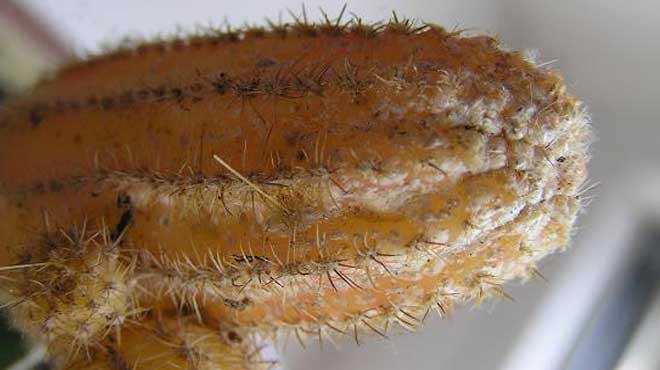

First of all, you should eliminate the lack of fertilizer. To do this, you will need to buy mineral fertilizers and fertilize the cactus. Having solved the issue, you should forget about it. Otherwise, nothing can be done. The people call the disease "jaundice", which can last from several weeks to several years. It is interesting that the planted stalk, which was taken from a sick cactus, after a while will also begin to turn yellow.
Today, experienced flower growers notice an increasing manifestation of certain diseases that have never affected cacti. In order to cope with them, you should react quickly, and even better, suppress their appearance by properly caring for the plant.
Physiological diseases
With proper care at home, the cactus develops well, retains its decorative effect for a long time. Compliance with agrotechnical recommendations is the best way to protect succulents from infection. Culture requires the creation and maintenance of an optimal microclimate. Variety must be considered as forest species require a more humid environment than desert species.
If the stem of a cactus has turned yellow, has become soft or dense, but has decreased in size, this does not necessarily indicate an infectious disease.
Possible physiological problems:
- suberization;
- abscission of brood buds;
- sunburn;
- chlorosis;
- no gain.
Suberization
With age, the lower part of the stem becomes covered with a tough skin. A physiological process is necessary for the plant to give stability to the overgrown aerial part.At home, with proper care, this part of the cactus is almost invisible, which allows you to preserve the decorative effect of the plant. It is important for the culture to provide a dormant period to avoid corking and deformation of the stem.


If there is a lack of light, it is necessary to lower the temperature and almost stop watering. As a result, the succulent acquires a spherical or flattened shape, this area is not visible. The contact of the stem with the soil, the ingress of water on it, the vital activity of the spider mite are frequent reasons why the cactus turns yellow, the skin becomes dense. The defect can be disguised by mulching the surface of the soil substrate with pebbles.
Kidney collapse
A similar problem occurs when there is a lack of moisture in the air, insufficient watering, a lack of fertilizers, and a low room temperature. Often, the buds fall off after the transfer of the flower pot to a new place, carried out incorrectly or at the wrong time of transplantation, deficiency and excess of nutrition. During flowering, the plant should stand in one place, be turned towards the sun's rays. A cactus gets rid of unnecessary parts when exposed to unfavorable factors.
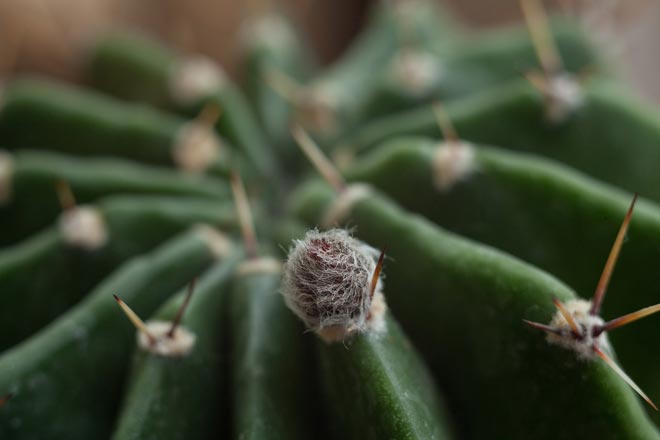

Burns
In winter, daylight hours are less, lighting is often not enough, so the plant weaned from the sun. In early spring or summer, in hot weather, direct exposure to rays leads to the formation of yellowness on the stem. It is no longer possible to get rid of such stains in the future. It is recommended to stop the process as soon as the marbling of the surface or slight redness becomes noticeable.
The danger of burns lies not only in the loss of decorativeness - this deprives the succulent of a part of the epidermis necessary for breathing. Severe damage can provoke decay and the subsequent death of an indoor flower. For this reason, noticing the defeat of the cactus, it should be transferred to a place protected from the sun, sprayed with a spray bottle. High humidity can eliminate the symptoms of minor trauma in a few weeks.


Chlorosis
Disruption of photosynthesis, slowing down the formation of chlorophyll leads to yellowing, discoloration of the stem. White spots may appear. The causes of the disease are different - poor drainage, damage to the root system, unsuitable soil, infections, pests. In this case, the main problem is the lack of minerals. Observance of the regime and rules for applying top dressing will help to avoid chlorosis.
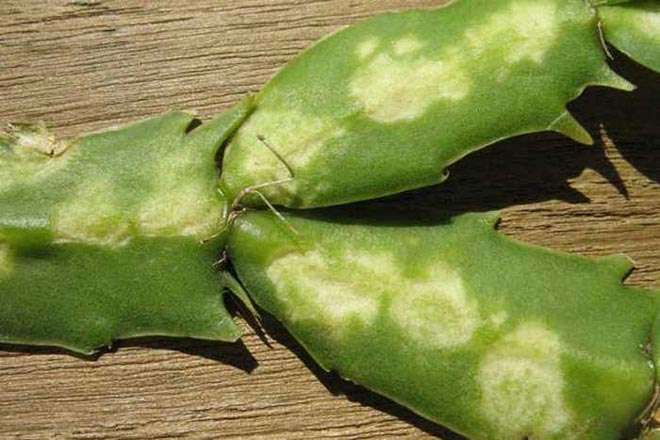

No gain
The cactus falls into a state of stagnation under unfavorable growing conditions. The physiological norm is a dormant period, when growth arrest is necessary for the plant to retain its decorative effect in the absence of proper lighting. Another possible cause is elevated air temperature. Not all representatives of the culture grow in the desert in the open sun, some prefer shade and coolness.
Increased irrigation in the current situation will only exacerbate the problem. For this reason, it is necessary to create a microclimate for the plant in which it grows in the natural environment.
Pests and diseases of cacti: description and treatment
Once you have decided to start breeding cacti, you need not only to get information about their content, but also about their protection. There are not many diseases in cacti, as well as insects that harm these plants, but if a succulent becomes infected, it can be extremely difficult to reanimate it. Treating cactus diseases and getting rid of pests is a painstaking process, and in order not to have to resort to it, it is better to immediately take preventive measures.
Both beginners and experienced cactusists one way or another have to deal with diseases and pests of cacti. Fortunately, cacti don't have that many. The cause of the disease of cacti, especially among novice collectors, is often the weakening of plants caused by improper maintenance.Among such reasons may be lack of light, improper watering, depleted soil, too high or, conversely, low temperature, etc. Weakened plants are primarily attacked by pests, affected by various types of rot and physiological diseases associated with metabolic disorders in the plant. However, pests of cacti can attack perfectly healthy plants, so it is very important to detect them in time and take appropriate measures.
How to cure a cactus from fungal diseases
In their homeland, most often cacti grow in dry climatic conditions and on weathered mineral soils. That is why they are especially susceptible to fungal diseases. In cacti with not yet dried and not lingering lesions that have not been covered with a protective cell film, there is a danger that the ubiquitous pathogenic fungi that live in warm and moist humus particles of the substrate will penetrate into the juicy tissues and thereby cause rapid decay of the stem.
Before curing a cactus from a fungal disease, you need to understand one simple thing - only a complete replacement of all infected soil will help. Fighting fungal diseases is almost impossible.
The so-called fungicidal plant protection products are not able to completely kill all fungi and their spores, but can only muffle the infection for a while. The best way to fight fungal diseases is to prevent them.
How to deal with spider mites on cacti
The spider mite most frequently visiting the collection settles on cacti, pierces the skin of the plants and feeds on their sap. Signs of its appearance are the finest subtle cobwebs on the stems of plants and dry brown spots, which over time can cover the entire stem.
Look at the photo - this pest of cacti weaves a web, which becomes clearly visible in the sun after spraying, when the smallest drops of water settle on it:
When severely damaged, the plant turns out to be hopelessly spoiled. The species Chamaecereus silvestrii, which is the first to be damaged, is considered to be one of the reliable indicators of a tick attack. However, this is not necessary at all. A tick attack can start from other species. It is important to notice in time the traces of the tick activity and the very small arthropod (0.4 mm) reddish in color and prevent it from spreading throughout the collection. The tick goes through several phases of development, from egg to adult. The duration of the phases depends on the time of year and ranges from several days to two or more weeks.
Read also: Growing pitahaya at home from seeds
How to deal with spider mites on cacti using chemicals? Chemicals to combat ticks and other pests are divided into contact and systemic. The former infect pests by direct contact, the latter - they enter the plant and destroy pests that feed on sap or parts of plants. From old means, excellent results in the fight against ticks are obtained by treating the collection with the acaricide "Keltan". 2 g of this drug is diluted in 1 l of water (to obtain a solution of 0.2% concentration) and sprayed on the plants. If necessary, the treatment is repeated after a week. It is necessary to spray in cloudy weather or at night. It is advisable to carry out preventive treatment of the collection against ticks in spring and autumn.
Of course, it is possible to use other, more modern drugs, in particular "Actellika" - a broad-spectrum insecticide. The drug is low-toxic, used at a concentration of 0.1% for spraying plants and watering the soil from pests. Fitoverm is also a broad-spectrum drug.
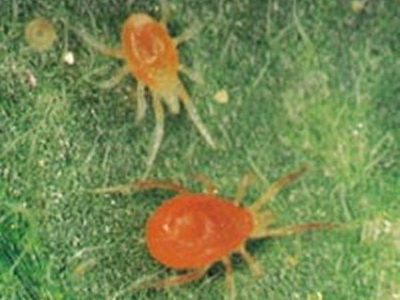

Its concentration in the working solution, depending on the type of pests, is different: from spider mites 2 ml per 1 liter of water, from aphids - 4.5 ml, from thrips - 5 ml.If the effect of a new drug on cacti is unknown, then it is better to first try it on one plant. Some preparations can cause burns to the skin of cactus.
Below is a description of the pests of cacti, worms and nematodes, and also tells about the measures to combat them.
What cacti are sick with and how to treat succulents for spotting
The various spots of cacti have been studied even less. It is very difficult to distinguish between spots caused by non-pathogens, pests, pathogens and viruses. However, apparently, most of the spotting in cacti is caused precisely by microorganisms and viruses. Some consolation is that they most often affect plants weakened by unfavorable conditions. So, rusty stains on the stems appear after prolonged exposure to cold and humid conditions. Spotting on various cereus, suberization of spearpoa, and brown spots on astrophytums also develop at close to extreme temperature drops.
Pay attention to the photo - these diseases of cacti can have the appearance of rusty surface spots, cortical growths, translucent mosaic light stains, dark surface plaques, depressed spots that differ from the main color, convex specks of green, red, rusty colors, etc.:
Surgical removal is useless - the remaining scars disfigure the plant even more, damage to nearby tissues does not occur even without intervention, and such an operation does not prevent the emergence of new spots in other parts of this plant and on other plants. So how to treat a cactus at home if it gets sick with spotting?
Spraying with preparations of fungicidal action inhibits the spread of some pathogens of spotting. However, the main, apparently, is the maintenance of the best growing conditions for cacti and the initial selection of healthy plants. In branched cacti, periodic removal of affected branches sometimes gives good results.
How to deal with mealybugs and nematodes on cacti
Mealybug is a small (about 5 mm long) insect covered with a whitish waxy coating that repels water. In protected areas of the stem, the female lays eggs in waxy cocoons that resemble cotton balls. It multiplies extremely quickly. Worms, like ticks, suck the juice from the stem of the cactus. How to deal with mealybugs on cacti? An effective measure of pest control is spraying the collection with contact poisons.


The root worm is a small insect (1-3 mm), parasitizing on the roots of plants. Against the background of the soil, it is clearly visible. The signs of the disease are the cessation of the growth and flowering of plants. The root worm is destroyed by contact poisons or by heating in hot water, as if infected with a nematode.
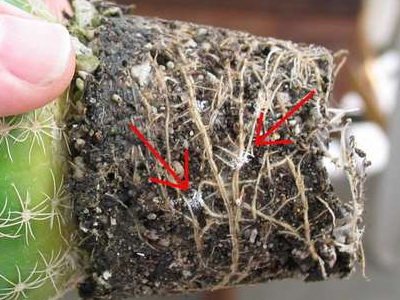

Cactus nematodes are microscopic roundworms. Infection with nematodes usually occurs for two reasons: when the soil is poorly cultivated for planting plants and when foreign plants are placed in a collection without checking and quarantine. The latter reason is most typical for novice cactusists.
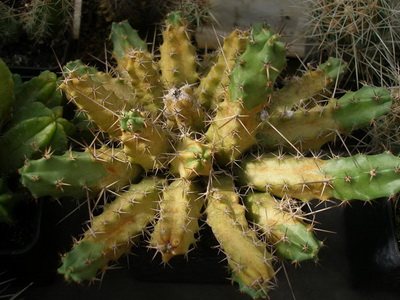

Due to a lack of experience and a desire to quickly increase the size of their collection, they often acquire any cacti without checking and put them in the collection. Nematodes live on plant roots. Two types of nematodes can parasitize on cacti - gall and cactus. The roots affected by the root gall nematode have nodular thickenings of various sizes. External signs of nematode infection are growth arrest and wilting of the plant stem. A cactus shaken out of a pot shows rotten, sloppy roots.
The male cactus nematode is about 1 mm long. Lemon-shaped females penetrate half of their body into the root. The development of the nematode proceeds with the formation of a cyst covered with a keratinized membrane, resistant to poisons.Signs of infestation are similar to rootworm infestation, but root swelling does not form.


To combat nematodes, it is possible to use special drugs, but they are usually too toxic for home use. Good results in the fight against nematodes are obtained by heating the entire plant in water at a temperature of 50-55 ° for 15-20 minutes. After that, it is necessary to cut off the damaged roots and dry the cactus for 3-4 days. The cut roots are destroyed along with the soil from the pot, and the pot and the tool are thoroughly washed and heated in hot water. The cactus is transplanted into fresh soil and quarantined to ensure there is no pest. The harmful effects of nematodes are aggravated by fungal infections that penetrate the damaged roots and cause them to rot.
Next, you can see a photo and learn about the treatment of cactus diseases.
How do diseases manifest and what causes
Outwardly, the pathology does not become noticeable immediately. First of all, small specks, bloom, cobwebs or discoloration of the stem may appear. Gradually, the condition will worsen, the problem will become more pronounced. In advanced cases, the body of the cactus shrinks, decreases in size, or vice versa, swells, cracks. The appearance of necrotic fetid masses is possible.
As a rule, it is no longer possible to save such specimens. For this reason, you should regularly inspect the plant, analyze the compliance of its growth and development with the given growing season.
The main causes of cactus diseases:
- physiological;
- fungus;
- bacterial damage;
- viral infection;
- pests.
What to do if harmful insects are found
How to deal with ticks


Spider mites can be easily identified by their characteristic white coating
Most often, it is ticks that harm cacti. The result of their activity - a plaque that looks like rust - is, unfortunately, almost impossible to remove: stains remain on the plant even after recovery.
Ticks are not affected by conventional insecticides. It is supposed to process the cactus with other substances - acaricides. But even with them, everything is not so simple: most ticks quickly develop immunity to poisons. The surviving pests after the first treatment may not even notice the exposure to the hazardous substance during the second procedure. Therefore, use powerful drugs such as:
- Actellik;
- Neoron;
- Fufanon;
- Apollo;
- Oberon.
Dilute the product according to the manufacturer's instructions and thoroughly spray the entire cactus stem and soil with the solution, especially in the root zone. To consolidate the effect, carry out the treatment twice with different means. The interval between procedures is 1 week.
For prophylactic purposes, wipe a healthy plant with a solution of acetone and alcohol, taken in a 1: 2 ratio. It is most convenient to use a brush for this.
Mealybugs and other plaque-leaving bugs


Root bugs are similar to mealy bugs, but are located exclusively at the root system
To combat worms, it is better to use systemic drugs. Water the soil in which the cactus grows with a solution of Confidor or Aktara. The roots absorb the active substance well, which has a detrimental effect on the worms, and distribute it throughout the plant.
In case of local concentration of pests - on the roots and root collar - use the so-called root baths. Soak the roots of the plant in hot water for 15 minutes (the optimum temperature is 50–55 ° C). You can also rinse them in Actellik's solution (the dilution method is indicated in the instructions), but no more than 5 minutes.
Experienced cactus breeders recommend doing this (the sequence of actions must be strictly observed):
- Rinse the roots thoroughly to remove the worm. Start with lukewarm liquid and add hot liquid constantly (water must be running). There should not be a single white spot left.
- Lather the roots with a cleanser such as Fairy.Soak them in the lather for about 10 minutes, then rinse thoroughly.
- Dip the roots in a very strong Fitoverm solution and leave in it for 15 minutes.
- Then dry the cactus.
- Throw away all the contaminated soil, pour boiling water over the pot, wash thoroughly with a cleaning agent.
- Plant the dried cactus in a new substrate with the addition of 2 packs of crushed activated carbon, a small amount of perlite and vermiculite.
- Water the rest of the cacti with Fitoverm (if you are growing several of these plants).
- Put the cured flower back in place.
Shields and false shields, due to which the cactus stops growing
To get rid of the scabbard, remove it with a cotton swab dipped in rubbing alcohol. If the spines of the cactus are too thick and do not allow such manipulations, water the plant with a solution of Komfidor or Aktara. The pests will die from the effects of systemic insecticides, their bodies will dry out, and you can easily shake them off the cactus with a brush. If one treatment was not enough, repeat the procedure after a week.
If you find flat scales of a reddish or brown color on the plant, try to pick them off with your fingernail. If they separate, leaving a wet spot on a whole, intact skin, then you have a scale insect or its false congener in front of you. Otherwise, you are dealing with a disease, not a pest.
Root infecting nematoda


Nematodes are so small that they can only be detected by spherical swellings.
You can get rid of the pest by cutting off all affected parts of the plant. After that, the cactus should be completely treated with alcohol and given a hot root bath. To do this, remove the soil from the roots and immerse it in water with a temperature of 70 ° C for 30–40 seconds. After the procedure, the root system is supposed to be sprinkled with crushed activated carbon.
If you prefer to use chemicals, choose an imidacloprid-based substance. For example, Confidor's solution is 1 g per 5 liters of water. In addition, Tanrek and Vermitic have proven themselves well (they are divorced according to the instructions). Submerge the whole plant in the solution (both stem and roots) and hold for up to 10 minutes.
To prevent the emergence of nematodes, use only a sterile substrate when planting and transplanting. Pre-steam it in boiling water or heat it in the oven for 10-15 minutes at 200 ° C.
Optimal conditions for growing desert and forest cacti
Cacti came to us from Central and South America and have long taken a firm place in the hearts, as well as on the windowsills of many flower growers - both beginners and professionals. These plants are very diverse, but in general they are divided into two types: forest and desert. Cacti differ significantly from each other in appearance, which means that the conditions of their maintenance are different.
Among desert cacti, the following are considered the most popular for indoor cultivation:
- echinopsis;
- Echinocereus Knippel;
- echinocerius comb;
- echinocactus Gruson;
- Cereus Peruvian;
- chamecereus Sylvester;
- aporocactus lash-shaped;
- espola woolly;
- notocactus;
- astrophytum capricorn;
- prickly pear;
- parodies (golden-needle and blood-flowered);
- dwarf rection.
Forest cacti naturally grow under trees or on their crowns. The most common of them among florists are:
- ripsalidopsis;
- epiphyllum;
- zygocactus (Decembrist, Christmas).


One of the most common forest cacti is epiphyllum.
Native to the desert, cacti love plenty of sunshine. Therefore, the most suitable place for them is the windowsill on the east and south sides. But for their forest cousins, it is better to pick up windows facing west and north. Otherwise, the stems will become discolored, the cycle of flowering and dormant periods will be disrupted.
In summer, it is allowed to take out desert cacti to fresh air (for example, to a balcony).In winter, especially if the room is hot, be sure to provide high humidity for forest plants. Their desert counterparts have a dormant period at this time: you need to remove indoor flowers in a room with a temperature of 15-17 ° C and keep them in the shade or partial shade.
Desert and forest cacti should be watered with settled water at room temperature, and preferably with melt or rainwater. The optimal watering frequency is as follows:
- spring, summer - every day or every two days;
- autumn - every 5-7 days;
- winter - every 7–12 days.
The plant evaporates less moisture as the room temperature drops, so the need for watering is reduced under these conditions.
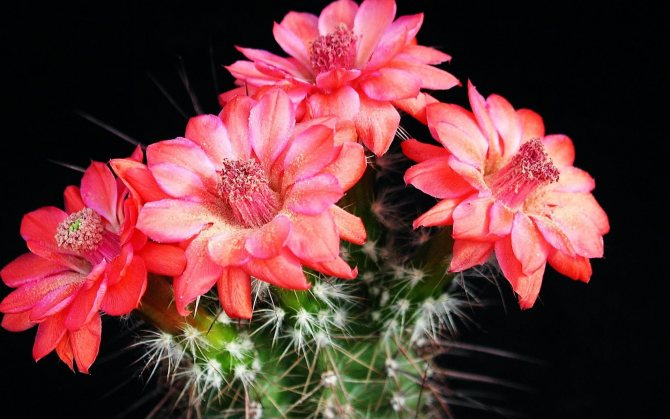

If you want cacti to delight you with abundant flowering, provide them with a dormant period.
Like any other plant, cacti need replanting. It is carried out in the spring, when active growth begins. But the procedure is carried out only if the pot has become small for the root system.. Young cacti are replanted every year; when the plants are 3-4 years old, this is done only when necessary.
Viral diseases
As it turned out, not only people and animals, but also plants suffer from viruses and mycoplasmas. Infection in most cases occurs when the infected plant sap is transferred by insects or when cutting cuttings.
Plants suffering from viral diseases cannot be cured. And even cutting off the affected parts will not work, since viruses infect the entire flower. As for chemicals, they do not exist yet.
The most common viral disease of cacti is the epiphyllum mosaic. The tissues of the plant are covered with slightly deepened, transparent blurry spots of yellow color. The diseased specimen must be destroyed.
Many experts suspect that jaundice can also be viral in nature. With this disease, cacti begin to gradually turn yellow, and yellowness also appears on healthy shoots, which are released by an ailing plant. The disease negatively affects the flowering process, the buds dry and fall off.
Quite often prickly pears fall ill with a rather specific disease called "witch's brooms". Its causative agents are mycoplasma organisms. The main signs of pathology are chloroticity of shoots and growth retardation; it is extremely difficult to diagnose the disease.
There are cases of tissue overgrowth in cacti that resemble cancerous growths. More often this happens due to infection of the flower with pathogenic bacteria. A sick specimen can grow for more than one year and even enter into bloom, however, since there is no cure, sooner or later you will still have to say goodbye to a green pet.


The flower is rotting
Rotting of a cactus is caused by two pathogens:
- Phytophtoracactorum fungus - It causes wet rot.
- Gloeosporiumopuntiae fungus - causes dry rot.
Wet rot initially attacks the root system of a prickly green plant.
In particular, there is a danger for the spread of the fungus during the transplantation of the cactus. Therefore, during this period, it is not recommended to water the plant for 5-6 days.
During this time, callus (tissue that promotes healing of injuries) appears on the roots of the flower, and the danger of decay disappears.
Often, wet rot develops against the background of frequent watering and low air temperatures.
Attention! In this case, you need to remember one rule - the colder the air, the drier the land near the cactus should be.
Dry rot develops in the inner part of the stem. Therefore, it is impossible to immediately recognize the disease. At the last stage of the disease, the stem begins to dry out from the inside.
Dry rot spreads against a background of cold and dampness.
The photo below shows what a dry rot of a cactus looks like:


And this is wet rot:


How dangerous is a mealybug?
When settling on a plant, the mealybug sucks out the juice of the cactus... As a result of infection, the plant becomes lethargic, slows down or completely stops its growth. In this case, the stems of the flower turn pale, losing their green color, the bark of the trunk cracks. Flowering dies, the buds wither and die. In the worst case, if you do not take control measures, the cactus will die (you can find out about what can cause the death of a cactus and how to understand that the plant is dying here, and from this article you will learn you can save the plant).
Spotted rust
It is caused by fungal infections of cacti, but can also be caused by bacteria and viruses. The stems of the plant are covered with rusty spots, crusts, stains, which do not make sense to remove, because scars remain in their places. The likelihood of developing spotted rust increases with temperature drops, sunburn, and cold watering.
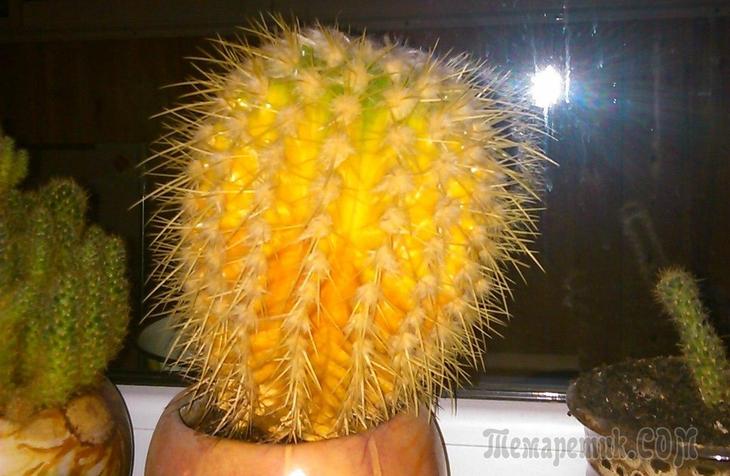

To fight, it is necessary to treat cacti with fungicides, which will prevent rusty spots on the body of the cactus from spreading further. Another type of spotting of cacti is anthroknosis, from which round, dry, depressed spots of light brown or darker color appear on the body of a cactus. You can fight using a Bordeaux mixture, colloidal sulfur or a solution of copper sulfate.
Why are thorns falling off and how to solve the problem?
A cactus may have thorns falling off due to a lack of calcium in the soil. If the plant is strong, then it can be transplanted into another substrate and added to the last crushed egg shell. You can pre-heat it in the oven. For young plants, as a preventive measure, crushed shells can also be added to the drainage.
It looks like a plant that has lost some of the thorns:
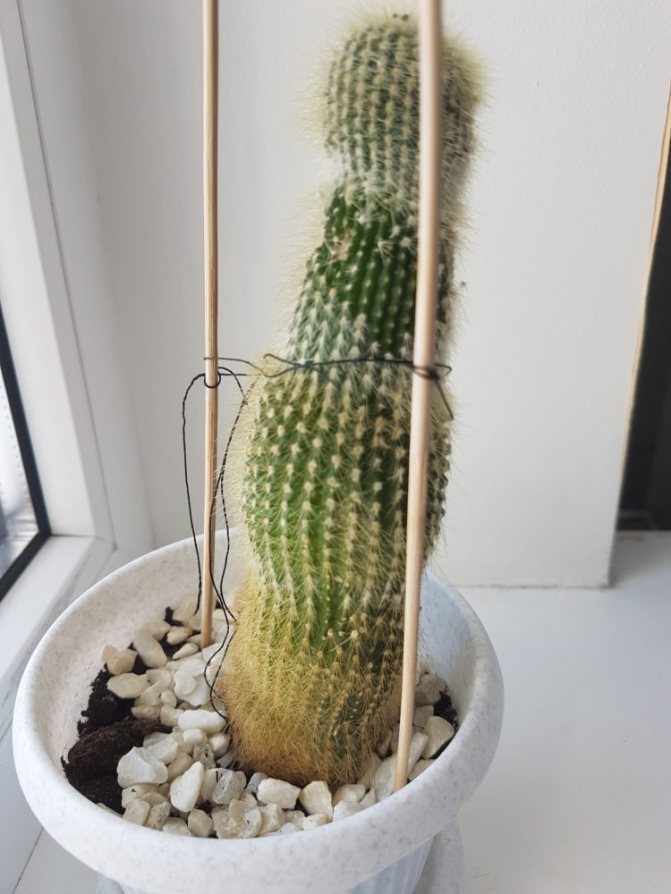

Fungus problem
The fungus most often contributes to the spread of rot on the plant. The reasons are cold weather and waterlogged soil. The most common fungal infections are:
- Late blight - decay starts from the neck of the cactus. Treatment consists in cutting off the decayed parts of the flower down to healthy tissue. Then they dry out and take root.
- Fusarium - the root system is affected. The cactus stops growing, becomes covered with rusty spots, turgor softens. The cactus is treated with fungicides, isolated from other plants, and placed in a dry and warm room.
- Helminthosporosis - affects crops in spring. This is facilitated by high humidity and low temperatures. Treatment consists of removing the contaminated soil. If it is suspected that the seedlings are infected, they are removed from the soil and monitored for some time.
In this case, the air should be dry and warm, the plants themselves do not come into contact with each other. If diseased seedlings were found, they are removed, and only healthy plants are planted in the soil.
This is how a cactus affected by a fungal infection looks like:
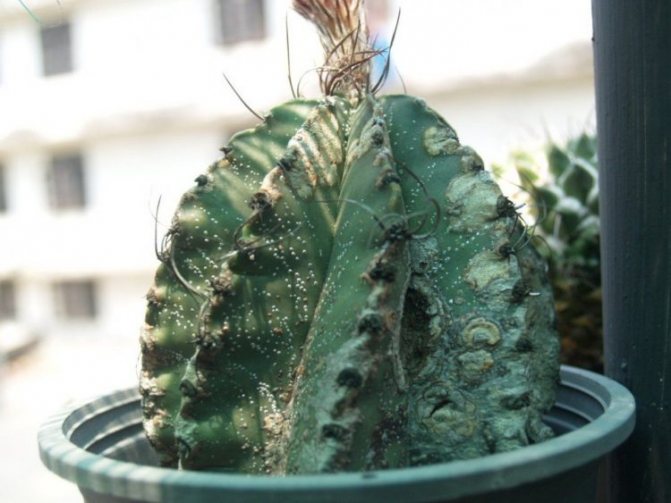

What plants does he like?


For mealybugs, citrus plants are attractive. In addition, it will not pass by:
- bromeliads;
- cycad;
- cacti;
- maidenhair;
- peasants;
- aglaonem;
- ferns;
- asparagus;
- monster;
- hoi;
- peperomia;
- anthurium;
- ardisium;
- brunfelsia;
- bougainvillea;
- gardenia;
- dieffenbachy;
- shefflers;
- poinsettia;
- violets;
- fatsia;
- chlorophytum;
- rhododendron;
- cyperus;
- cissus;
- amaryllis;
- hippeastrum;
- orchids;
- azaleas.
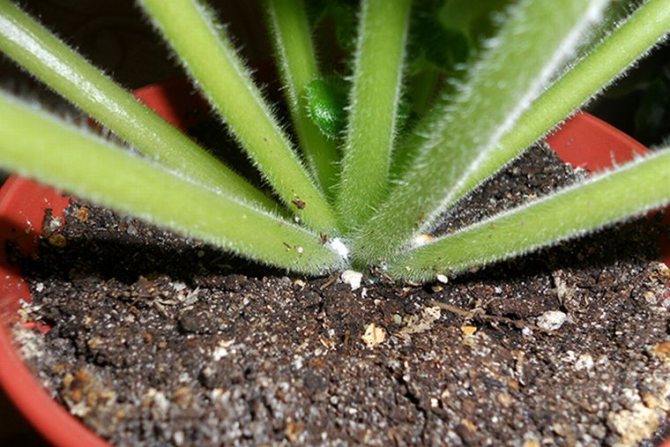

Mealybug loves to live on indoor violets
Photo
Below you can see a photo of the affected areas with a mealybug that looks like mold.
Lack of lighting problems
- Many problems with succulents arise if they do not have enough light. When there is little light, the plants stretch out, lose their color, sometimes change to such an extent that it is difficult to guess which plant it is;
- It is the lack of light that provokes various diseases, rot. Therefore, before buying exotic succulents, ask if you can provide adequate lighting.You may need to buy special lamps for additional lighting in autumn and winter days;
- In insufficient light, flowering species do not form flower buds, and therefore will not bloom. But it is enough to hang fluorescent lamps over such flowers and lengthen the daylight hours to 10-12 hours, and the situation can be improved.
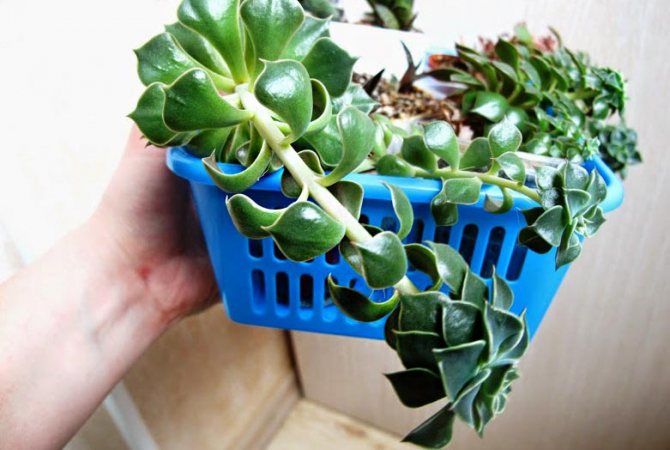

Lack of lighting
Mushroom gnats
Fungus mosquitoes circle around the plant or crawl along the soil surface.
Did you know? An adult mushroom gnat is completely harmless. The larvae of this pest, which hatch from eggs, are dangerous for cacti. The larvae outwardly resemble worms that live in mushrooms. They differ in that they have a black head and a transparent body up to 8 mm in length.
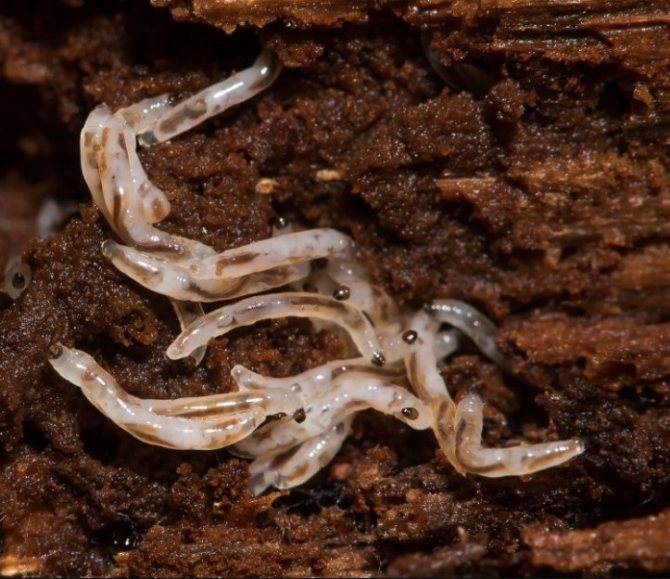

Mushroom gnat larva feeds on organic waste from the soil. The affected plant slows down growth, stops blooming. If the disease is started, the cactus dies, because the larvae eat the young roots of the plant.
To get rid of from mushroom mosquitoes, you need to dry the soil, and then water it in moderation. For adults, use duct tape hanging near the plant. You can prevent mushroom mosquito eggs from depositing in the soil by placing dry sand on top. It is convenient to destroy the larvae by treating the contaminated soil with an insecticidal agent.
Ways to fight - chemistry to help
It is necessary to start treating the affected plants with mechanical treatment.
Young shoots, leaves, root collar, underside of leaves and their axils, buds, flowers, peduncles are places where insects accumulate.
Worms are lured out by increasing the temperature and humidity of the air around the plant.
If the plant is slightly damaged, it should be washed with a solution of laundry soap. This procedure should be done once every seven days.
The terrestrial part of small-leaved species is treated with a soapy solution using a spray bottle. Every thirty to forty minutes, the solution should be washed off under running water. After several days, the processing is repeated.


Treatment of plants from pests
If the described methods of struggle did not bring the desired result, then drugs with an insecticidal effect should be used. These include Aktar with Confidor-maxi, Aktellik, Vertimek and others. To enhance the effect, drugs are taken and mixed.
Any drug of your choice is diluted in a ratio of 1 gram of drug to 1 liter of water. The resulting mixture is poured into the soil of the plant. It is necessary to pickle all plants, not excluding unaffected flowers.
Watering with the solution should be done in the usual way. Excessive amount of the mixture poured in can lead to the fact that the root system will rot. After seven days, watering is repeated. It is recommended not to reuse the same drug, but to replace it with another one.
If the mealybug destroys your flowers, there is salvation:
How to tell if a cactus is sick?
Diseases of cacti can manifest themselves in different ways. Surely not every florist, let alone a beginner, knows about all the symptoms that indicate diseases of the "prickly" flower.
There are many reasons why the epiphyllum cactus changes its appearance:
- During the growing season, the cactus does not grow - this is a clear sign of some kind of malfunction. First of all, improper care can affect this - rearranging the flower to a new place, insufficient lighting, improper planting or moistening with cold water. In addition, cacti also stop growing when a disease occurs. The reason for the slowdown in growth can be their long and abundant flowering, as well as stress after vaccination.
- Shrinking and drying occurs in plants that suffer from a lack of moisture, while being in bright light. If the plant is flooded, its stems become soft. It is almost impossible to save such a flower. Although some growers succeed in this by carrying out a transplant with the removal of all rotten roots.
- Cactus tend to change the color of the leaves. Usually, this reaction of a flower is caused by a change in the conditions of keeping - moving the plant to a new place, changing lighting, etc. With age, some species change the color of leaves and stems, and this is their feature. When the disease appears, cacti turn yellow, turn brown and become covered with mosaic spots.
- Mass shedding of foliage and premature fall of flower buds. Most often, the reason for this is stress caused by changes in the growing conditions of a flower - a change in the habitat of a flower, lighting, watering, temperature conditions, etc. The reason for this may be an excess or lack of fertilizers in the soil, the appearance of diseases and pests.
- The dying off of shoots in an epiphyllum cactus can be triggered by damage to the root system during the transplantation process or by frequent watering with cold water. Sudden changes in temperature, as well as drafts, can cause the same reaction in cacti. Diseases and pests are another reason why the stems of cacti die off.
- Spotting, yellowness or plaque on the surface of plants appears after water gets on their leaves or stems, as well as from exposure to direct sunlight, as a result of which the plants get burned. From hypothermia, the cactus becomes covered with rusty spots. Due to a lack of nutrients, it turns yellow over time. By damaging cacti, diseases and pests can also provoke yellowing.
- The formation of cracks or wounds on the stems of a cactus occurs as a result of mechanical damage or an excess of organic matter in the soil.
- Rotting of the root system is primarily caused by waterlogging of the soil in conditions of insufficient illumination and low temperature conditions. The death of cactus roots occurs due to a lack of moisture, in conditions of high temperatures and bright light. Very often this can be observed in the summer season, when the soil in the pot overheats from direct exposure to sunlight.
- The epiphyllum cactus blooms poorly or does not bloom at all. There are several reasons for this - poor lighting, lack of a dormant period in the winter season, violation of regular watering and temperature conditions, improper transplantation of a flower, as well as a lack or excess of fertilizers in the soil. The absence of a flowering period in cacti can be caused by some kind of disease or pest infestation.
What if the green friend withers?
Sometimes the reason for the wilting of a cactus is a banal lack of water.
The dried soil is watered, and excess liquid comes out through the holes in the pot.
Important! If the soil is sufficiently moist, then the reason may lie in the so-called etiolation. With it, the rounded and stem-like parts of the cactus are narrowed. In this case, it is necessary to provide the plant with an influx of sunlight.
This is a cactus that withers:
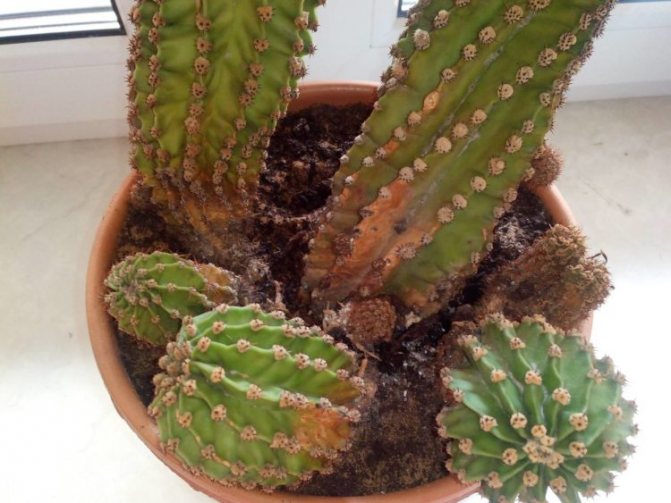

Nonparasitic diseases
Suberization
appears as a result of too high air humidity at low temperatures, as well as in case of malnutrition, for example, with an increased content of nitrogen in the soil. Leafy cacti and various types of prickly pears are very susceptible to this. The damage pattern resembles the corking of the epidermis with a strong spider mite lesion.
Burns of the epidermis
Especially often it can be observed in spring, when plants, after a long dark winter, immediately find themselves in the bright sun. Damage manifests itself as large, pale yellow spots on plant stems that cannot be healed. In especially severe cases, burns lead to decay and death of cacti. Prevention of this undesirable phenomenon is the gradual accustoming of plants to intense sunlight.
Redness of plants
It may be the result of strong solar overheating with a simultaneous sharp lack of water or hindered root activity as a result of diseases of the root system (for example, with nematode damage)After eliminating the cause, the plants for the most part regain the normal color of the epidermis.
Falling buds and underdevelopment of buds
It is often seen in the so-called leaf-like cacti. Caused by lack of water, dry air or improper nutrition (excess nitrogen), damage due to low temperature, or spraying and watering with cold water. After budding in plants, it is not necessary to change their position relative to light. A stop in the development of buds is most often observed in the species of Echinopsis, rebucias, lobivia and prickly pears, if they are watered too early and abundantly in the spring.
Dries up
Initially, the stem begins to dry out. First of all, it is necessary to exclude the factor of poor watering. The lack of moisture manifests itself more intensely if the plant is on the sunny side of the windowsill.
If, when the cactus dries, the stem is soft to the touch, the problem may be an excess of moisture. It is recommended to transplant the flower as soon as possible and remove the decayed parts of the roots.
This is a cactus that dries:
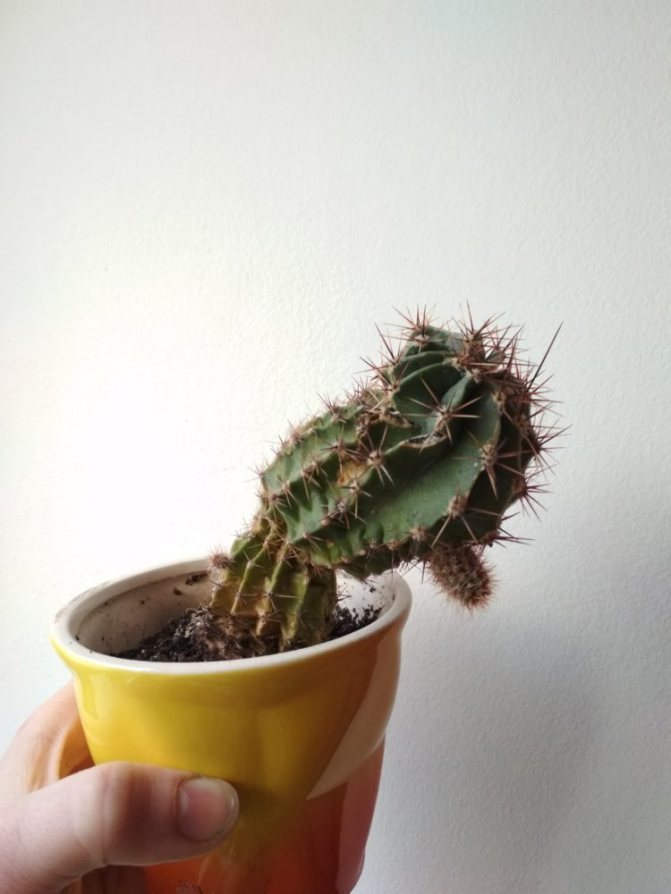

Incorrectly selected soil
Such "true" succulents as Aloe, Gasteria, Agave are completely unsuitable for store-bought earthen mixtures based on peat. The roots of these succulents are adapted to hard, breathable rocky rocks.
For them, you need to make up a substrate with minerals: gravel, beams, zeolite, akadama, kanuma with a small amount of organic matter. Add sand - rinse it in a disinfectant solution and dry it. Be sure to have crushed charcoal in the substrate. All the missing substances for good plant growth are obtained from regular mineral supplements.
Good breathable soil prevents putrefactive diseases of the roots and root necks of plants. Therefore, it is better to make up the substrate with your own hands.
Stick to proportions and stir the mixture well to achieve uniformity:
- 1 part of purchased land for replanting, made on the basis of peat;
- 2 parts of sand, perlite or pumice;
- 1 part zeolite;
- Crushed charcoal.
There are many options for compiling a substrate, but it is better to see what is recommended for a particular succulent. Some growers add waste shungite from water filters. We must not forget about the correct drainage and its sufficient amount. In a pot, it should occupy at least 1/3 - ¼ parts.
A succulent pot should be chosen depending on the length of the roots, but, as a rule, wide and not tall pots are chosen. There should be enough holes in the bottom of the pot for the free flow of water.
Phytophthora
Cactus late blight is a fungal disease caused by fungi of the genus Phytophora, which is transferred to the plant from contaminated land. Under the influence of mold fungi, cactus tissues become soggy mass. From this disease, the roots of cacti and the base of the stems rot. A heavily affected plant can be saved only by rooting the upper healthy part or by transplanting it onto healthy roots.
Important! Spores of the phytophthora fungus easily get into any damage and wounds of the stem. The likelihood of a cactus disease increases if the soil is waterlogged, especially in cool weather.
Powdery mildew
This common fungal disease, which is also called ashes or linen, often affects indoor vegetation, including cacti. The causative agents of the disease are microscopic exoparasitic fungi, their mealy-whitish mycelium develop on the aerial parts of flowers.
Symptoms of the disease
Pathogenic fungi feed on the vital juices of the succulent, depriving it of useful substances, as a result of which other signs of the disease appear, in addition to white spots, which eventually turn into a continuous felt plaque:
- The cactus becomes lethargic, the leaves and stems lose their turgor.
- If the plant is preparing to bloom, then its buds begin to fall off without opening.
- Fungal spores cover all large areas of the flower, disrupting the processes of photosynthesis. Cactus leaves, if any, dry up, turning into dry "boats".
It is important! The symptoms of powdery mildew are similar to those of another ailment - peronosporosis. The second name of the disease is downy mildew; with its development, discolored areas acquire a reddish-brown tint. And it requires a different therapy.
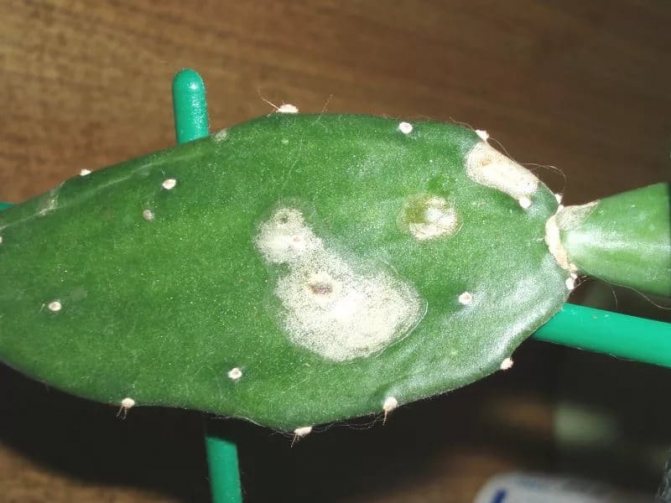

The main causes of the development of the disease
Powdery mildew infects succulents that are kept indoors with excessively humid air. The same happens when the temperature regime is violated, the soil is waterlogged or when it is oversaturated with nitrogen. Fungi that cause disease are present in the natural flora of plants, however, with negative changes, their excessive growth is observed.
The spores of the fungus spread over a large area, therefore, at the first signs of damage, the diseased specimen should be isolated. All plants in the same room with him must be examined and treated for preventive purposes, even if there are no signs of powdery mildew. The disease is very dangerous, leading to the death of the specimen, so it should be treated immediately.
Correction of conditions of maintenance and care
If the therapy is carried out without changing the errors of the microclimate and the mode of care, then the pet will most likely die from the disease. It is important to create the most comfortable conditions for a weakened exotic pet:
- Watering should be carried out only after the topsoil has dried out.
- The room needs to be regularly ventilated, but make sure that the cactus does not stand in a draft.
- During therapy, it is forbidden to spray the succulent, unless it is required to irrigate it with medications.
- It is advisable to increase the daylight hours to 10-12 hours by placing the succulent pot in a dry, warm place with diffused light.
- Flabby, dried leaves and buds are removed.
- You cannot feed a sick flower.
This will not only speed up the healing process of the green pet, but also make it more resistant to diseases and pests infesting cacti in the future.
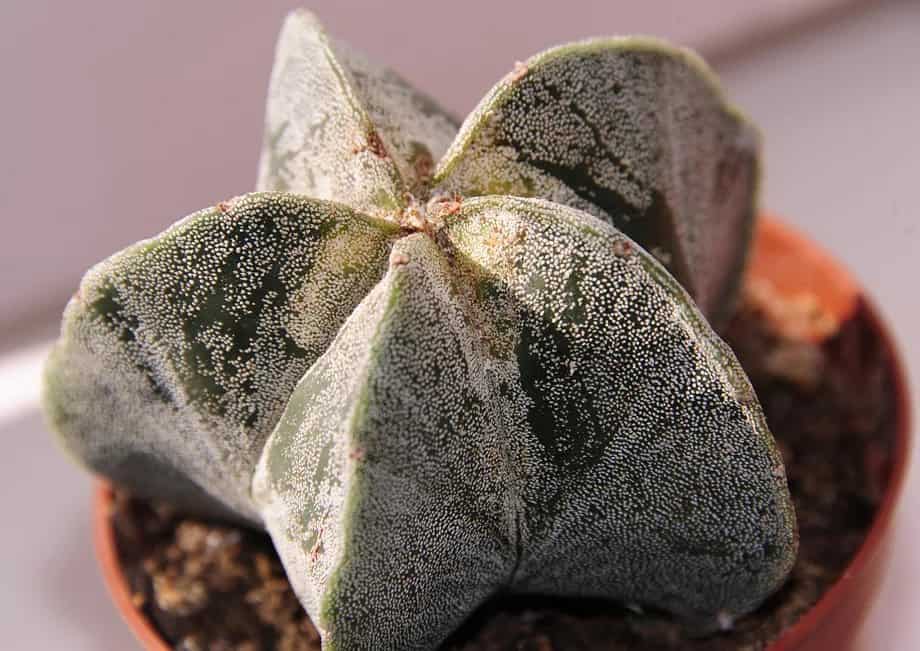

Powdery mildew therapy
If the cactus grows in the form of a shrub, then it is recommended to remove all parts affected by the fungus, leaving only healthy ones. After pruning, the succulent is transplanted into fresh soil.
With a slight damage to the flower, you can resort to folk remedies:
- Treatment with a soap-soda solution - 1 tbsp is added to a liter of boiled and cooled water. baking soda and the same amount of liquid soap that does not contain additives. The liquid is used for spraying - once a day for 3 days.
- Irrigation with a weak solution of potassium permanganate - several permanganate crystals are diluted in a liter of water. It will take three sprays, the interval between which is 3 days.
- Spraying a cactus and watering the soil with mustard powder diluted in water - 0.5 tsp is enough for a liter of water. mustard.
- A solution with copper sulfate and laundry soap - it is not difficult to prepare the composition, it is enough to dissolve 5 g of copper sulfate in a glass of water and separately soak a small piece of soap in a small amount of water. The soap mass is slowly poured into the vitriol, liquid and is constantly mixed. Among other home remedies, this is considered the most effective against fungal infections.
If the plant has suffered significantly from pathogens, then fungicidal preparations - Topaz, Fundazol, Hom, Vectra, Previkur and others - fight most effectively against pathogenic fungi. They are bred in water and sprayed with flowers, or all parts of the plant are wiped with a cloth soaked in a medicinal solution. On average, 3-4 treatments are required, which are carried out at weekly intervals.
Preventive measures
You can improve the health of succulents, make them more resistant to all kinds of diseases and pests, by fertilizing with complex mineral dressings containing a large amount of phosphorus and potassium.
Experienced cactus growers recommend pollinating flowers with sulfur once a month for the prevention of powdery mildew or sprinkling with milk diluted with water in a ratio of 1: 3.
Fusarium
The disease caused by fungi of the genus Fusarium often affects jointed cacti. The disease spreads gradually, first the roots, then it enters the conducting system, reaches the top, and the plant withers. A typical sign of fusarium is reddish-brown vascular vessels on the cut. In addition, the stems are covered with a pink or purple bloom, wrinkle and fall.
An excess of moisture in the soil and high air humidity are ideal conditions for the development of fusarium. If a cactus gets sick with fusarium, then it must be destroyed, but as a preventive measure, you should adhere to the watering regime and moderate temperature, prevent mechanical damage to the plant, use only steamed soil, avoid excess nitrogen, water with foundation, and it is not recommended to treat it.
Treatment options
Orchid leaves: main diseases and methods of dealing with them
Depending on the type of disease, there may be several treatment options.
Cutting off the roots
How to save a cactus if it starts to rot from below, the sequence of actions:
- Cut off any roots that are severely damaged or completely rotted.
- Rinse the remaining healthy roots in a solution of potassium permanganate.
- Sprinkle with sulfur powder or charcoal powder.
- Dry for 2-3 days, hanging in an upright position.
- Take a new disinfected pot, pour steamed soil into it and plant a cactus.
- Once planted, the plant does not need to be watered at all for 3-4 weeks.
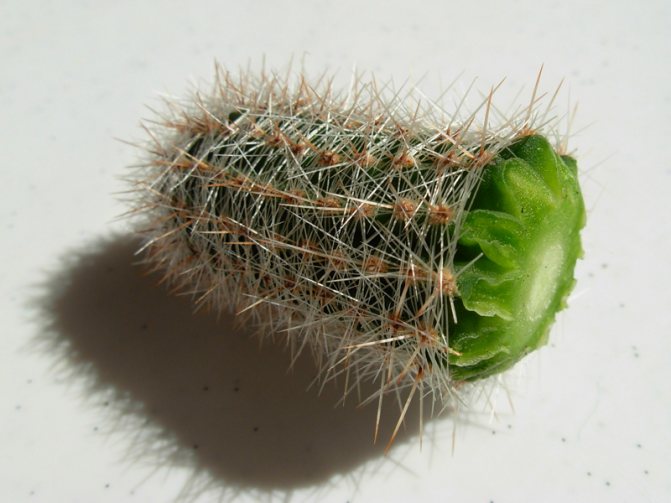

Cutting off the roots
To avoid such a problem in the future, you must adhere to all watering rules.
Additional Information! Fungi have different modifications, but each of them will progress more if the flower is in a cool room, and it is cloudy or raining outside at this time.
Rerooting
If the root of a cactus has rotted, what to do in this case:
- Cut off the rotten piece and watch carefully to keep the cut healthy and clean.
- The stem must be slightly "sharpened", like a pencil, so that later it would be more convenient to plant it in the ground.
- Treat the cut with crushed activated carbon.
- Allow to dry well by securing it upright or place it on a plastic cup.
- Wait for young roots to sprout. The process is quite lengthy, it can take more than ten days.
- When roots appear, plant a seedling in the ground for cacti.
- Water only through the pallet. 10 minutes after watering, drain all the water that is glass.


Re-root process
The next time you can water it only after 3-3.5 weeks.
Another way to reanimate a cactus if it has rotted:
- Cut off all the decayed part of the cactus.
- Dry for 3-4 days, during which time the cut should be tightened.
- Treat with a root growth stimulant and place in a glass of water. You need enough water to cover the cut by 2-3 centimeters.
- After about 1-2 weeks, new roots will appear, when they reach 1 cm in length, the plant can be transplanted into a new prepared soil.
A cactus transplanted in this way cannot be fed with fertilizers for one year.
Cactus transplant
In the presence of pests or diseases, it is worthwhile to transplant the flower into a new pot with new soil.
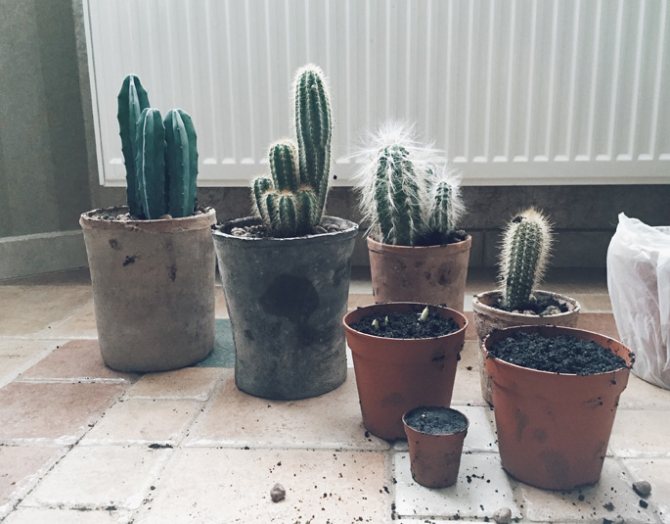

Transferring to a new pot
The cactus rots from the bottom, what to do, in this case:
- Shake the cactus out of the old pot, carefully examine the root and the trunk itself.
- Cut off dried and damaged roots, if the stem is damaged, it must be cut to a healthy tissue, and sprinkle with crushed activated carbon over the cut site.
- Next, the flower must be rinsed well in hot water (50-55 degrees), adding a fungicide or insecticide to it.
- Dry for 3-5 days in the sun in an upright position with well-spread roots.
- Plant in the ground by placing the stem vertically in a pot and sprinkling soil over the roots. It is very important to ensure that the ground does not reach above the root collar.
After such a transplant of a cactus, it must be kept in partial shade, without watering, for about 3-5 days.
Note! When planting, it is important to arrange good drainage in the pot and add a lot of sand to the soil.
Pruning affected areas
How to save a cactus if it is affected by fungal rot:
- If the trunk of a cactus is affected, cut off the affected area with a knife and treat it with sulfur.
- If the top is affected, then it must be cut off to healthy tissue, and the plant itself should be used as a rootstock for grafting.
- If there is rot on the cactus, disinfect the wounds with charcoal or activated charcoal, or treat it with brilliant green.
During the period of treatment for fungi, it is necessary to exclude any spraying with water; it is better to use a fungicide solution for this purpose.
Treatment with drugs
With dry rot, brown spot and late blight, it is necessary to periodically (1-2 times a month) treat plants with phytoncides and insecticides.
With brown rot, if the cactus has become soft and watery, what to do:
- Heal all injuries on the cactus trunk.
- Adhere to the correct grooming regimen.
- Treat the plant with fungicides once every 1-2 weeks.
Difficulties with growth and recommendations for owners
Sometimes a cactus has certain growth problems. This happens for a specific reason.
Does not grow
The growth of a cactus is largely influenced by various minerals and trace elements. They are found in plant food.
- with a lack of nitrogen, the cactus stalk will slowly grow;
- lack of phosphorus slows down growth, the plant turns pale;
- with a lack of calcium, the cactus root grows poorly.
Stop the development of a cactus or slow down its lack of boron, copper, iodine and chlorine. All these trace elements are present in sufficient quantities in fertilizers for cacti. They need to be added according to the instructions.
Stretched out
With a lack of lighting, the stem of the plant is deformed. He begins to reach for the light source, so it turns out to be elongated. The situation can be corrected by placing a cactus pot on a light windowsill and rooting the cut off top.
This is what a cactus looks like when it stretches out:


Bent down
The cactus can bend due to rotting of the root systemthat does not hold the plant properly. Remove the flower from the pot and examine the root. If there are rotten areas, they are removed.
This is the cactus that bent over:


Read about why the cactus is stretched or bent and how you can straighten it, read here.
Falls on its side
Due to abundant watering, a cactus can stretch up and soften, as a result, it falls on its side. In this case, transplanting and reducing watering will help.
Helminthosporiasis disease can also be the cause. In this case, the dried out areas are cut off, the plant is transplanted into a new, previously disinfected, soil.
This is a cactus falling on its side:
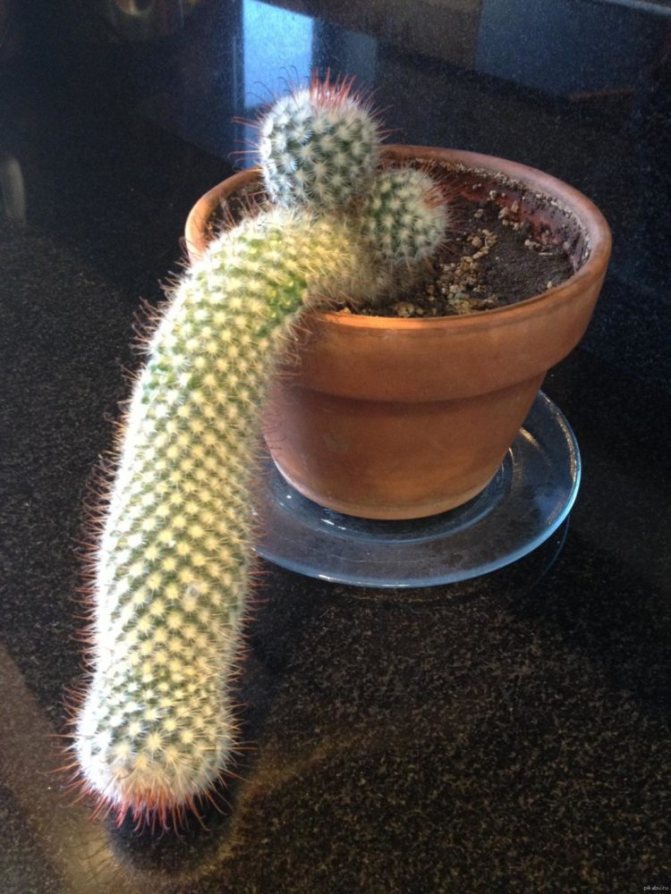

Broke in the middle - what to do with the top?
This is what the plant looks like when it breaks in the middle:
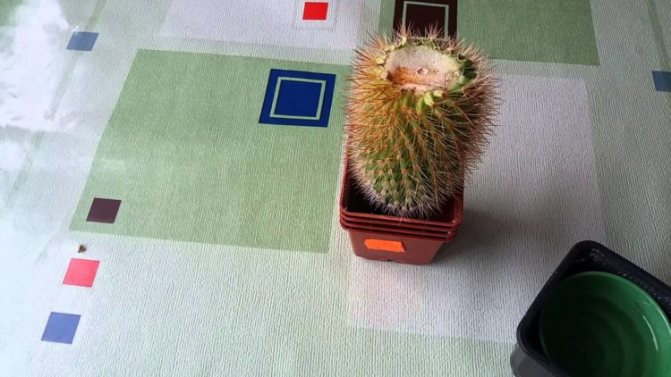

If the flower is broken, then you can try to root the top.
Watch a video on how you can root a piece of cactus:
What it is?
The cactus is covered with white spots or dots that look like granulated sugar - this is the main symptom of an attack by a pest such as a mealybug.
- the parasite has an oblong, slightly oval body, its dimensions reach 5 mm in length;
- the color is grayish with white villi all over the body;
- the main harm to the plant is brought by females and insect larvae;
- an additional sign of mealybug infestation is the thinnest white cobweb that envelops the cactus;
- a sooty mushroom can develop in parallel (the pest carries its spores).
There are several varieties of the pest.They differ in the habitat and dietary habits. The mealybug can live and feed exclusively on the root system of the plant. Other species prefer the root zone, the zone between the ribs of a cactus or its areola.
There can be several reasons for the infection of the parasite on a cactus... The most common routes are improper care, contamination from a nearby plant, or penetration through contaminated soil.
Further care of the cactus
Sticky drops on orchid leaves: causes and treatments
After the plant is healed, so that in the future it does not have any health problems, it is necessary to create favorable conditions for keeping.
Temperature and humidity
For cacti, which are native to the desert, it is necessary to provide sufficient sunlight. They feel good when placed in direct sunlight, but in the summer, in the midday heat, it is still better to shade them so as not to provoke a burn.
Summer temperatures are preferred over 26-28 ° C heat. Humidity they need at least 40-50%. the preferred air temperature in winter is no more than 15-18 ° C warm. Most of the varieties (except for the densely pubescent ones) will easily tolerate a temperature drop of up to + 5 ° C. For people from the tropics, bright, but diffused light and humidity of at least 60% are required.
Watering
In winter, cacti are dormant and hibernate. During this period, the plants do not need frequent watering. Watering cacti is worth not more than once every two weeks, and in small quantities. With the arrival of spring, the amount of watering is gradually increased, and in the summer it is watered quite often (once every 3-4 days). From October, watering should be limited again. Water should be used only warm and purified.
How to understand that a cactus has dried up after winter
First, dry spots appear on the stem, the flower loses its decorative qualities, and eventually dies altogether. If a cactus grows even a little, new thorns appear on it and all green tissues remain alive, it is in good condition. If the stem is hard and the soil in the pot is very dry, then the cactus is clearly dying from drought, especially if it is located in an area of active sunlight.


Watering through the pallet
The soil
For cacti native to the desert, the soil needs light, loose, moisture-permeable. For tropical succulents, the soil needs an airy, light and slightly acidic soil. The soil should have good drainage in the form of small pebbles, expanded clay or crushed bricks. The soil must contain sand, peat and charcoal.
Diseases of cacti and their treatment at home require special attention, since its future fate will depend on the timely assistance provided to the green pet. In order to cope with diseases and pests, you must always react quickly, and even better, suppress their appearance by properly caring for your beloved prickly friend.
Dry rot
It is rather difficult to identify this disease. Dry rot is usually found when the cactus is in its "dying" stage.
What to look for when examining?
When Phoma rostrupin is affected by fungi, the plant turns pale and begins to dry out. Most often it goes unnoticed. Then, dry, cracked crusts appear on the body of the cactus, with pressure on which the finger falls into the trunk. If the stem is cut, the cactus is empty, dry inside.
Prerequisites for the disease


Drift of the causative agent of phomosis through wounds on the trunk of a cactus. When transplanting, transporting a plant, you can accidentally violate the integrity of its body. In such cases, the fungus penetrates the damaged areas and the cactus becomes infected.- Violation of wintering conditions. With improperly organized wintering, the resistance of the cactus to infectious diseases decreases.
- Excessive watering. Excess moisture causes rotting of the root system, which weakens the plant's resistance to infectious diseases.
- Sick cactus grafting. Only healthy plants should be grafted.
- Transplant into soil previously used for another plant. If a cactus with dry rot has previously grown in the soil, such a substrate should be destroyed and in no case be used for other plantings.
Is there anything you can do?
No effective methods have been developed to combat dry rot. The disease develops quickly and ends with the death of the cactus. To prevent this disease, plants should be treated with fungicides on a quarterly basis, the conditions for keeping cacti and their wintering should be observed.


